

5 of the world’s best luxury trains

Two underrated beach destinations you need to visit

Discovering Mpumalanga: 10 Towns Beyond the Beaten Path

Hennops Hiking Trail: perfect for a weekend adventure in Gauteng

Tips to help prevent jet lag

Things to do in George: unearthing the Garden Route gem

Just in: fly-in safaris now on offer to Tintswalo Safari

7 things to learn from people who live in Blue Zones
5 south african writers on how travel inspires their writing.

Travel has always played a significant role in the makeup of vast works of literature: in fact, I would go as far as arguing that there is no greater medium through which one travels across time, imagination and ideas than literature.
We spoke to some of our favourite South African writers about how their experiences of travel inform their work. And after this, I can confirm that indeed, to write, is in many ways to travel.
Here are 5 of the writers we spoke to in their own words:
Achille Mbembe
Achille Mbembe has written extensively on African history and politics, he writes columns for newspapers interrogating race and class, his work has been translated into various languages and editions. The Wits University Printing Press recently released an African Edition of his book, On The Post Colony .
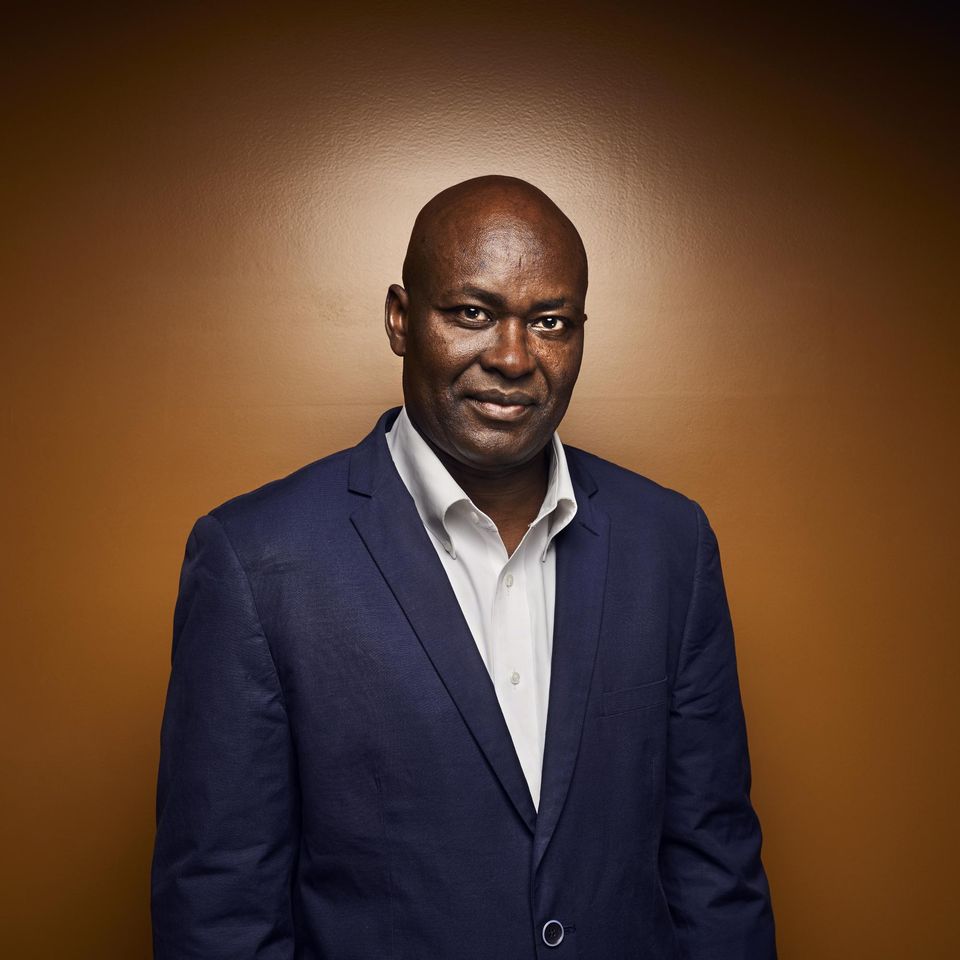
Photo by Manuel Braun .
I travel even when I do not move physically. I love spending long hours alone in silence. This allows my mind to free itself from the weight of its surroundings, to wander and to explore reality. For me, this is part of what travel is all about. It is about releasing the soul from the shackles it is tethered to, the body included. The soul can then undertake a process of transfiguration before coming back to better reanimate the body.
What’s your ideal way to get out of the rut of routine and recharge?
Precisely by experiencing those deep moments when the mind is left to itself. The best thoughts I have ever had have come from those moments of silence. Without them, I cannot think or write. Sometimes I also let my mind float, as if I am flying above the elements. Otherwise, I love cooking. I am also a soccer addict. I can spend long hours on a couch watching soccer games on television.
What’s your fondest childhood travel memory?
It may not be the fondest but it is certainly the most dramatic. It was the first time I took the train. A cousin was getting married and the entire family had to attend the wedding. I was 6. Trains in those days were always full. People travelled with huge loads of things in containers of all kinds. During this first experience on the train, I travelled for 60 kilometres next to a goat. The poor fellow did not seem to mind. We then had to catch a bus to reach the locality where the wedding was taking place. The road was bumpy and dusty. The whole thing was so physically uncomfortable that my mother could not stop throwing up.
Bongani Madondo
Bongani Madondo is author of the Hot Type (2007), I’m Not Your Weekend Special: Portraits on the Life and Style & Politics of Brenda Fassie (2014) and his most recent book, Sigh the Beloved Country which came out this year and promises readers a thrill of the South Afircan artistic landscape. Madondo has written for publications such as The New York Times, Rolling Stone, Sunday Times and Marie Claire. He is mostly known and celebrated for his social and artistic commentary.
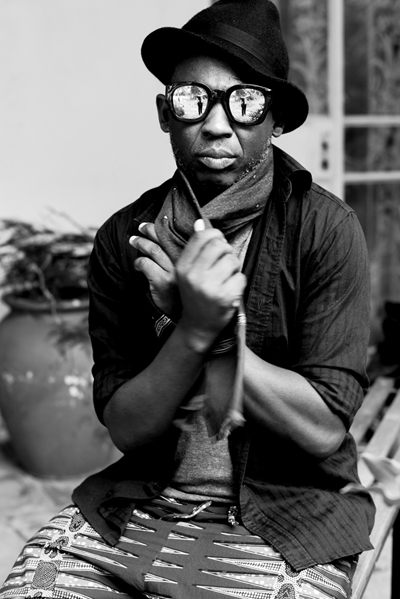
Photo by Victor Dlamini.
Travelling and the imaginary, as well as futuristic time travelling, has shaped not only the writer I am but the spirit and person I am. I’m a travel writer in essence, even when I do not work in the packaged travel genre. My very writing… half, if not the entire scope of my new book ‘Sigh, the Beloved Country’ is basically premised on the concept of a writer as a travelling jester, intruder, out of towner or rock ‘n roll scribe tripping with some of the most mind-bending music bands of the time. I imagine I must have worked in a travelling circus in another life.
What’s your ideal way to break away from the demands of daily life?
Writers, at least this writer has no such luxury as to ‘break away from the demands of life’ if by that you mean a break away to a specific destination. My life revolves around the axis of stress, perpetual dance in the shadow of poverty, beauty, music, and two naughty children. It is a life filled by the mundanity of preparing kids for school, listening to any of Johnny Cash’s “American Series” albums and a 24-hour mad dash to meet this or that deadline. Being Middle Class can be both beautiful as well as spirit depriving experience. I’m fortunate though in that my wife allows me to go on these long trips around the country… just to clear up my thoughts and prepare for a new book or film or lecture.
Travelling in a Valiant, known colloquially as “Valaza 6-Mabone”, in my neck of the woods in the Pretoria and Hammanskraal area back in the early 1980s. My mom and a few of us little banana peels “stouters” will prepare days in advance, made sure our button down starched shirts are ironed and the lovely self-belt Huckleberry Finn style three-quarter suits are in good, dry clean quality shape and that our black kinky hair was shiny and smelled just as our flower bed in my granny’s house. All that for a local trip to visit our ailing granny Koppotjie Nkomo at the local hospital. The prize, of course, was the anxiety of having to wait for the Valiant down next to the local football grounds on a sunny Sunday, momma clad in a bell-shaped floral dress and rocking an African braided hair do they called a ‘plait.’ Fuck, it was magical.
My first longest trip was taking five buses apiece, in a relay style drop off and wait for another bus, to a place called Rugtesloot… I was 12 and it felt like I was heading to a place on the dark side of the moon. It was beautiful and scary. I was going on a midyear school break to visit a family friend… not even my friend… my mother’s friend!
Nakhane Toure
Nakhane Toure is a writer and musician, and his debut novel, Piggy Boy’s Blues , was published in 2015. Nakhane is also an award-winning musician with two albums out, Brave Confusion and his most recent, The Laughing Son which also came out in 2015.
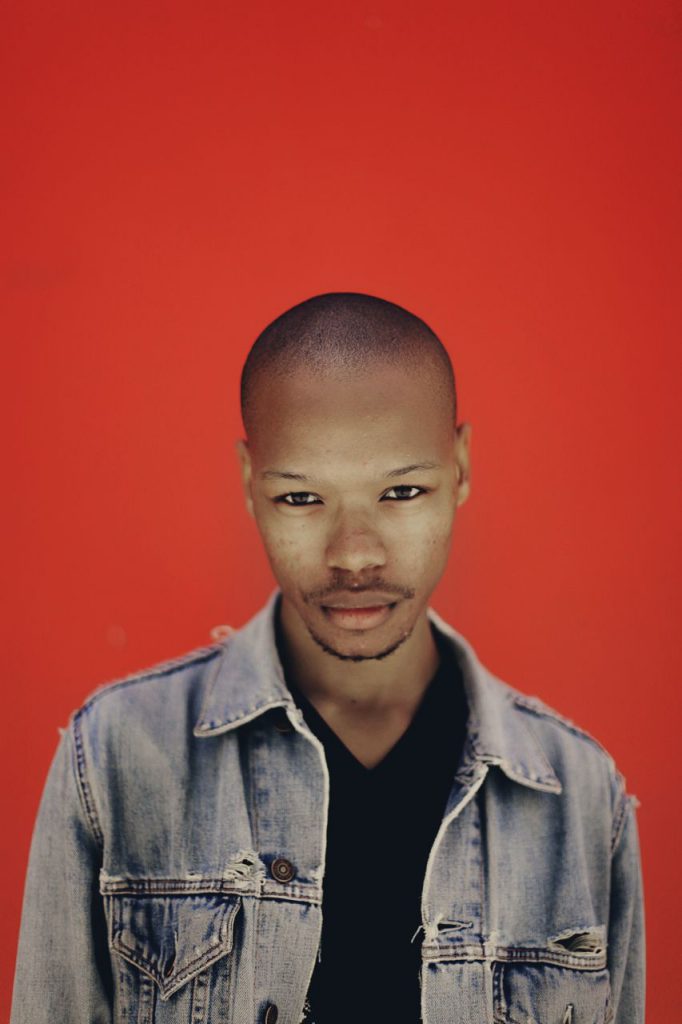
Photo by The Con .
I think a big chunk of my novel occurs on the road. People travelling by car from city to city, and their experiences with that, whether it be for work or for leisure. When I was a child, and actually right up until I was in my late teens my family and I went on a lot of road trips. So for me, travel was always about the hardness of tarmac, landscape, praying that a tyre would not burst, listening to music while looking at the stars at night. That reverie – it’s almost cinematic – informed how I think, how I dream, how I work on ideas. Just sitting there in one space, waiting for something good to happen.
How do you break out of daily routine to recharge?
I’ve recently started taking part in a class run by Paige Holmes at the Dance Factory called Body Wisdom. It’s a voice and body movement class that uses a lot of Arthur Lessac practices. It’s essentially a class for performers to find a place in their body that is original within them, harness that, develop it and to make sure that the performer does not burn out. It involves quite a bit of meditation and yogic exercises. That has been my saviour recently. I’ve got a very very busy head.
Where do you mostly prefer to write and why?
Alone, in a room where there is complete silence. I’m distracted quite easily, so I have to be willful in getting myself away from people or things that can distract me. Also, when I’m in that space I know that I only have one objective here, and that is to work.
Rebecca Davis

I think being fortunate enough to have had exposure to worlds beyond South Africa has been extremely beneficial to my perspective as a writer. It’s so easy to get consumed by this country, in all its good and bad, and we tend to forget that many of our challenges and successes are not as exceptional as we think. When I travel I also always look forward to gaining more of an understanding of how the rest of the world sees us. On a more basic level, travel almost always makes for good writing fodder – and when you’re required to produce a lot of content, that helps! I do feel extraordinarily lucky to have visited some really memorable places, from a floating village in Nigeria to a gay old-age home in Sweden to a nightclub in Ibiza where they flooded the place with water at midnight and we all swam around fully clothed…
Like many families, we used to go to the same spot on holiday every year: to Wilderness, on the Garden Route. I still think it’s one of the most spectacular spots in South Africa, and the winding route that takes you there is magnificent.
What is your favourite place in South Africa to visit & why?
There’s a little town called Barrydale outside the Karoo which is one of my favourite getaways. There is almost literally nothing to do there, which is precisely its appeal. It is so peaceful that you basically start yawning as you drive in.
Yolisa Qunta
Yolisa Qunta is an associate editor at JucyAfrica and a regular columnist for allforwomen.co.za. Yolisa spent her formative years in Zimbabwe and Botswana as a child to political exiles and returned to South Africa with her family upon the country’s first democratic elections. She compiled a collection of essays by young South Africans on what it means to live in South Africa today, ‘ Writing what we like: A new generation speaks “, published earlier this year.

Travel is very liberating in the sense that when you are away from the familiar you have the freedom to become someone else should you choose to. On the other side of the world where nobody knows you a little reinvention is actually a great idea. When I’m outside South Africa I like the idea of being anonymous and asking the locals the sort of direct questions I can get away with as a curious tourist. I scribble some highlights in my journal when I’m on a trip. But mostly I wait till I’m home and all the impressions, textures and sensations are in some orderly fashion mentally then I write away.
I can never get enough of Durban. The fact that the water is warm enough to swim in is a winner as I live in Cape Town and that doesn’t happen here. The food is amazing, the locals are awesome and the scenery makes you dream a little. Also, those parties that carry on until dawn…
The first time I ever flew on a plane: we were travelling from Botswana to Zimbabwe as unaccompanied minors. We got to meet the pilots and look at the cockpit. I found the air hostesses incredibly glamourous and the whole experience thrilled me. Even airline food was a novelty.
Related Articles
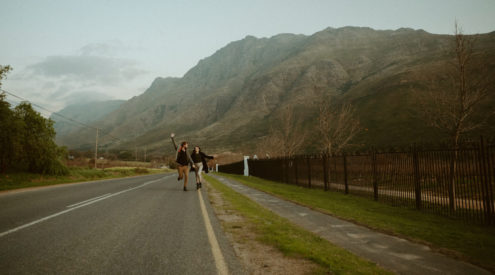
Meet South Africa’s digital nomads
4 November 2022
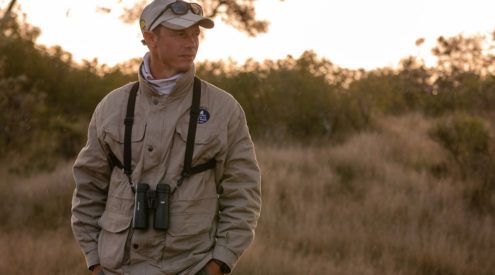
Interview with 2022’s Safari Guide of the Year, Cameron Pearce
1 November 2022

Hot on his trail: South African trail running champ Thabang Madiba
26 July 2022

Things to do in and around Ulundi

6 affordable weekend getaways in Hartbeespoort Dam
Privacy overview.
Functional cookies help to perform certain functionalities like sharing the content of the website on social media platforms, collect feedbacks, and other third-party features.
Performance cookies are used to understand and analyze the key performance indexes of the website which helps in delivering a better user experience for the visitors.
Analytical cookies are used to understand how visitors interact with the website. These cookies help provide information on metrics the number of visitors, bounce rate, traffic source, etc.
Advertisement cookies are used to provide visitors with relevant ads and marketing campaigns. These cookies track visitors across websites and collect information to provide customized ads.
Other uncategorized cookies are those that are being analyzed and have not been classified into a category as yet.
TRAVEL: Where to Go & Stay
Bliss and bustle in barcelona, your best-yet mediterranean summer trip, the seduction of santorini, where these boots have taken me, abrikoos kloof pod reserve: splendid isolation, heavenly seaside havens, a fiji family fling, where to stay, where to eat, where to wine, latest articles.
Looking for the right spot to stay for your visit? I’ve reviewed over 220 destinations – hotels, game/nature reserves, BnBs …
* This article first appeared here in YOURLUXURY AFRICA After passing countless colourful street processions, I asked our guide if …
* This article first appeared here in TravelLocal With a never-ending list of tempting Mediterranean options, rather than consult the …
* This article first appeared here on thelostexecutive.com From its dramatic volcanic birth centuries ago, to the two million guests …
I can recall the day as if it was yesterday – although it must have been nearly 25 years ago. …
With all her charm and razzmatazz, there comes a moment when inhabitants of The Mother City – and other urban …
* This article first appeared here in the Saturday Citizen With summer far from over, travel journalist Jared Ruttenberg took …
* This article first appeared here in ASPIRE Lifestyle Once a year I make the mammoth journey to visit family …
KZN: Beach and Bush Classics
* This article first appeared here in the Saturday Citizen As a child of KwaZulu-Natal, my early memories are happily …
5 Unmissable Cape Town Restaurants
The quarter kitchen giveaway: cape town’s home of…, cape town hidden gems: part 2, christmas wishlist 2018, a paarl winelands experience, 3 new drinking spots in cape town, kagga kamma: a bucket-list african experience, south african heritage road trip, meet the new generation of whisky drinkers, south africa: a world of wine, quoin rock: south africa’s golden vineyard, tales from the underground, flavours so fyn, plettenberg bay: sa’s best beach and now cap…, four must-have south african wines for your collection, the magic of mougins, a taste of portugal, perfectly portugal, three quintessential uk experiences, island hopping in the philippines, braving the bravarian alps, wilderness in waiting: bringing safari home, wilderness in waiting: conservation during covid, food for thought: what happens to our surplus…, 3 trends influencing the travel industry, hope for joburg: interview with franck leya, my home design finds…, wilderness in waiting: safari by the book with…, a franschhoek fling, my heritage journey with mr d food, jared and the insider sa in montagu, sizzling summer vacations, unique south african safari experiences, the best of boutique, take to the trees: 3 south african treetop…, three country cottages to wine away during winter, navigating depression: a personal reflection, walking italy: the way of st francis, what is devastation, a letter to myself, love, hope and faith, what i'm learning, words and pictures, the locked church, jared and the insider sa visit the cederberg, jared and the insider sa in mcgregor, the insider sa – jared visits graaff-reinet and…, the insider sa – jared visits bainskloof pass.
- TRAVEL GUIDE
- CAPE TOWN GUIDE
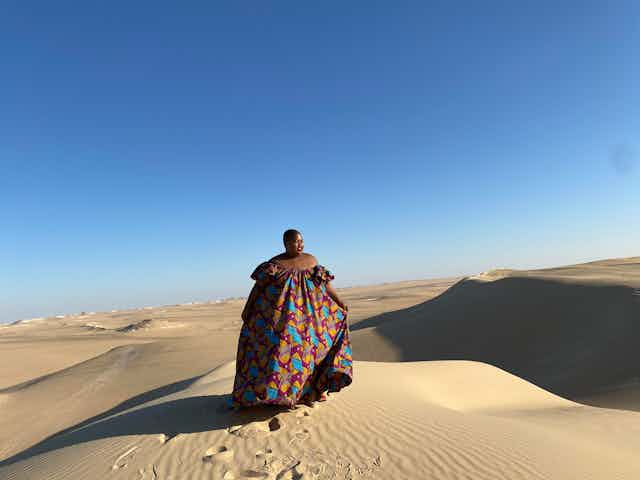
Five years on the road in Africa: how Lerato Mogoatlhe became a travel writer
Research Associate, Humanities Research Centre (and African Literature Department, University of the Witwatersrand), University of York
Disclosure statement
Janet Remmington has in the past received funding from the National Research Foundation and Oppenheimer Memorial Trust.
University of York provides funding as a member of The Conversation UK.
View all partners
South African journalist Lerato Mogoatlhe set off for three months in west Africa. She ended up drifting across the continent for five years. In 2019 she wrote a book about her travels, called Vagabond: Wandering Through Africa on Faith. As a scholar of, among other areas, African travel writing and mobility, I chatted to Mogoatlhe about travelling solo, queer and black.
Janet Remmington: In reflecting on the book, you write that your first encounters with countries that would become the story of your life “started with literature and music”.
Lerato Mogoatlhe: I have to say music videos were the most accessible way to experience the continent from my bedroom or lounge as a child in Pretoria, South Africa. They made me want to feel, hear, see, taste and smell what was out there for myself. How do you hear Oumou Sangaré sing about Bamako in Mali and not want to experience the city? Later influences in Johannesburg included university friends – and foods – from across Africa, bringing fresh perspectives and flavours. All of this opened my senses to the continent beyond the breaking news headlines or stereotypical perceptions.
Janet Remmington: Your book has a bold, enticing title: Vagabond. This word is usually defined in terms of one who wanders without a fixed abode. Throughout history vagabonds or wanderers have proved to be provocative. In colonial contexts like South Africa it was used, among other terms like “vagrant”, to disparage and control indigenous people on the move. Studies have shown how “vagabond” is loaded with double meaning: a romantic figure of freedom and also a challenging figure of disruption. Why did you chose it for the book?
Lerato Mogoatlhe: There’s no shying away from the vagabond. I am no stranger to the term’s double edge. I chose Vagabond precisely because travelling solo across the continent, especially back in 2008, seemed so random and outrageous to some people in my life. Why quit a job to travel? Couldn’t I find a better use for my money? Or: what exactly will you be doing, what’s there, why are you going?

I didn’t know anything about what was ahead, besides being ready to travel and seeing what would happen (in the absence of a travel budget). In this light, being a vagabond might be seen as aimless – almost like a failure to then launch into young adulthood.
However, to me, being a vagabond represents freedom and adventure, and the time of my life. The aimless wandering, the drifting without a place to stay … it remains a moment in time in my life. A glorious one. I knew my book would be called Vagabond even before I wrote a single word of it. I played around with the word, got used to it, and gave it a different meaning.
Janet Remmington: South Africa’s long history of colonialism and apartheid , which served the white state and population, suppressed many black freedoms, including mobility and cultural expression. I was struck by how you position your extensive travel across Africa as giving you “the opportunity to experience being black and African without disguising or denying myself to fit in”. Can you expand on this – the role that travel plays for you?
Lerato Mogoatlhe: This reflection was inspired by an experience I had in Dar es Salaam. I was at an ATM, withdrawing money when a man dressed in full Masaai regalia joined the line. I was surprised by it. I asked if there was a special occasion, but he said it was just an ordinary day. It made me think about Heritage Day in South Africa, where people dress in traditional attire. And how such an important expression of blackness/Africanness is embraced fully for just one day. I always think about the Ndebele cultural activist who was kicked off the train in Johannesburg because his traditional garb was deemed inappropriate.
Janet Remmington: You write very honestly in the book about the personal risks, as well as the rewards, of travel. You are lured by a conman in Senegal, for instance, and repel a rapist in Ethiopia. There are very real challenges, but you bring to life the many opportunities. How do you see Vagabond contributing to travel literature from and about Africa in this light, particularly writing as a black, queer woman?

Lerato Mogoatlhe: As a queer woman, it’s my declaration that there isn’t only violence in being queer in Africa and travelling around the continent. We are here, we live here. I cannot fear it and I refuse to fear it.
The personal risks: the weird and wonderful thing about travelling is that it makes life feel like a fantasy. I used to dream about places I’ve been to, and I still do. I get a thrill from turning the fantasy into reality. However, outside my fantasies, travelling is real life. It has challenges and heartbreaks.
I know one thing about myself: I am going to live big and loud, including travelling. Patriarchy, racism and homophobia are not going to deny me. I see my contribution as daring, fun and funny.
Vagabond is the story of a certain period of my life unfolding around Africa. It is intimate. It also adds to travel literature that doesn’t reduce Africa and Africans to clichés. In my work Africans are not happy-go-lucky souls who, despite being poor, are so warm and generous.
Read more: Travelling while black: 7 South African travelogues you should read
Janet Remmington: Vagabond is packed with adventure, transporting the reader to scenic and human wonders across Africa. However, the book does not avoid the continent’s harrowing zones. You write, for example, about your haunting visits to Rwanda’s genocide memorials which instilled a calling to “write Africa differently”. Can you speak about this deep sense of purpose and what it means?
Lerato Mogoatlhe: My story and connection to the continent is not the kind that amounts to “been there, done that, got the T-shirt”. I hope it is deeper: a conversation with others and myself about what this continent is beyond typecasts, and what it should be and what it should never be. It should no longer be wholly defined by war and conflict; we should no longer write our history with blood. I’m writing Africa by celebrating life, creativity and innovation. That’s my purpose, because whatever else this continent is, it is firstly and most importantly home.
- African literature
- African writers
- Travel writing
- Women and girls
- South African literature
- South African writers
- African travel books

Sydney Horizon Educators (Identified)

Senior Disability Services Advisor

Deputy Social Media Producer

Associate Professor, Occupational Therapy

GRAINS RESEARCH AND DEVELOPMENT CORPORATION CHAIRPERSON

- Siyabona Africa
- Our Travel Writers
Meet Our Award Winning Travel Writers

Carrie Hampton

Heather Willmore

Jacques Marais

Jeremy Jowell

Laurianne Claase

Gemma Pitcher

- Customer Support
- Tel: +27 21 424 1037
- Fax: +27 21 424 1036
- Contact by Mail
- Business Hours
- Mon - Fri. 08:00 - 17:00
- Saturday. 08:00 - 12:00
- Reservations and Bookings
- Booking Conditions
- Visa and Passport
- About Siyabona Africa (Pty) Ltd
- Africa Safari Holidays
- South Africa
- Kruger Park
- Victoria Falls Holidays
- Kenya Safari
- Zambia Safari
- Botswana Holidays
- Namibia Holidays
- Malawi Holidays
- Mozambique Holidays
- Zimbabwe Safari
- Safari Holiday Places In Africa
- Siyabona Popular Websites
- Safaris Specialist
- Botswana Safari
- Cape Town Hotels
- Kenya Safari Holidays
- Botswana Safari Tours
- Sun City Resort
- South Africa Nature Reserves
- Lodges near Kruger Park
- Hotels in South Africa
- Timbavati Private Game Reserve
Rambling with Rose
Lifestyle blogger, south african travel writer, brand new mom., christmas cheer.
After an eventful few weeks with plenty of travel every day, it’s been wonderful to have some quiet time with our little bear cub just before Christmas was in full swing. We got to set up the tree, hang a few garlands, adorn the house with flowers, and spend some time together appreciating the little things.

I made a little felt Christmas tree for her, along with all it’s ornaments and an advent calendar, so every day leading up to Christmas, she got a little felt ornament to add to her own tree as well as a few sweets, some bath beans, and a tiny toy or two. The little mouse in the sock that you can see below is my favourite ornament, as it’s one of the first socks she ever wore when she was first born (and now I get to see it every year!) ;D

As far as Christmas’ go, this has to have been my favourite one yet – as the house was so cozy! We got to spend it all together as a family, with all the grandparents, the Christmas music and cheer, and a delicious meal made with love, including home baked cookies which Amelia helped me with, every step of the way. ❤ It’s like they sing about in the shops, ‘it’s the most wonderful time of the year’.
Share this:
9 things i completely rely on as a new mom.

The first few months with my baby were a beautiful and terrifying blur of waking, feeding, playing and adjusting to my new role – along with keeping the household going, getting food on the table and the laundry done while trying to juggle my a freelance schedule – and all without getting more than 2 hours of consecutive sleep a night (which went on for months on end).
Truth be told, while I was often overjoyed that I could do this all with my baby by my side, there were also days it felt like too much to handle and all I wanted to do was curl up and cry alongside her. I found that when the days became hazy, and dragged on forever, I began to rely on small systems I set in place, and gadgets which made it easier to get things done in a hurry. For those hoping to skip some trial and error in your early days with your baba, here are some of the tried and true items and systems that I couldn’t have coped without:
1. B12 Boost – vitamin B spray and DS24 – these two items help keep my energy levels up and I function fairly well day-to-day because of them, despite the constant sleep deprivation.
2. Schlehlens Tonic – this has been a great maintenance tonic for me which have helped enormously with my energy levels, and I quite like the taste of it. There are also plenty of tea blends available which claim to help boost your milk supply, and even if they don’t work as well as necessarily claimed, it cannot hurt to have hydration options available that have no added sugars.
3. A coffee pot on a timer – this singular item is the only reason I was able to function for the first 6 months of motherhood. The simple joy of waking up at 6:30 and walking into the kitchen, where I was greeted by the delicate scent of freshly brewed coffee, is still one of my all-time favourite simple pleasures in life.
4. My breastfeeding essentials – most of these are still applicable a year-and-a-bit on, and I am known to still bake truckloads of gluten-free mini muffins, so that I can scoff them down after a midnight feed and stay relatively happy, while being woken at least 3 – 5 times a night.
5. Tidying up at night – I used to be a bit manic when it came to keeping the house neat, as we had people over all the time. That was until hubby pointed out that nobody but me actually cared. Now, I do a quick surface clean before people arrive, but the main tidying up of the house only happens after Amelia’s been put down at night, and it’s seriously saved my sanity.
6. Overnight oats – the ideal breakfast, especially on busy mornings. It’s super quick to heat and eat before rushing out or settling down to work. One scoop of oats, enough almond milk to cover it, a spoon of chia seeds, some ground flax seed, some date syrup or coconut sugar to sweeten it, a few drops of vanilla essence, and a sprinkle of sunflower seeds is all I use. Pop it in a jar, shake and put it in the fridge overnight. Eat as is or heat first.
7. Meal prep on the weekend – I do all of the cooking for our family, every single night, and find that if I do some basic chopping and prepping on a Saturday or Sunday, I can use the items throughout the week and cut down on the time it takes to make healthy, flavourful meals. I’ll buy in bulk and prep items which I then stick in the freezer and pull them out as required. Smoothie making is so easy now with pre-portioned items in a ziplock bag, so all I need to do take the fruit out, add yoghurt and milk, and a sprinkle of coconut sugar and blend. It also cuts down on food waste and means those last few berries or bananas don’t go bad. For veg I mainly grate, chop and peel carrots and portion them out into ziplock bags. Ditto with leeks. For soups, I toss everything into a pot to boil. I grate up all the cheese blocks into a container to use for the week. Little things like this make such a difference, especially on days when Amelia is cranky. It may seem like a ton of work when you first start, but it makes such a difference. Let me know in the comments if you’re interested in a full post about this some time.
8. My handbag . While I still love the baby bag I have, we’re now a year on and I’ve found it’s far more useful to keep all the items I need in my regular handbag, rather than carry two separate bags (especially since we hardly use the pram anymore). After taking stock of what we did use when out and about, I’ve found it’s easy to downsize to having two nappies and a small pack of half-used wet wipes on hand, two small toys and a board book while out and about, along with a small water bottle and snack container that baba and I share. You can see my full list of items I keep on hand in my “ what’s in my mama bag ” post 🙂
9. Medela Harmony handheld pump and Medela bottles – I absolutely love this brand (no, I haven’t been sponsored). I love it’s simplicity, it’s durability, and the fact that I haven’t had to replace the (very) pricey teats that come with every bottle purchase as they’re from birth to toddlerhood.
10. A pashmina scarf or lightweight scarf – a lifesaver when out as a nursing cover, blanket, sunshade, etc.
11. Go-to outfits options – apart from doing a closet overhaul so I only had breastfeeding friendly items in it, having an outfit formula I stick to has made my life so much easier. Be it sundresses, jeans and a slogan tee, or shorts and a 3/4 top, knowing at least 2 outfits you can slip on in a hurry and look pulled together quickly is incredibly important on days you’re feeling sleep deprived or sick – or when your little person just spit up up on you as you were heading out the door. #momlife ammirite?
12. Keeping makeup simple – a touch of colourful lip balm or a matte lipstick, a flick of mascara on the ends of my lashes, and ensuring my eyebrows are filled in is all I do nowadays, along with some sunscreen before heading out. I’m certain I’ll be back to cat eye flicks, on fleek brows, perfectly primped nails, and an elaborate eyeshadow game at some point, but when I’m just meeting friends, or running to the shops, I don’t need to look IG perfect, because to my little girl, I already am. And really, that’s all that matters to me at the end of the day.
I’d love to know some of your everyday essentials as I’m always looking out for hacks and hints to make life easier. 🙂
Amelia in One-derland
Hi lovelies,
It’s been a bit of a rollercoaster ride the past few weeks, with regard to prepping for Amelia’s first birthday (themed Amelia in One-derland) – as not only was I trying to get everything done on time, but her nana (my hubby’s mom) had a stroke a few days before and we’ve been up and down every day visiting her in the hospital, along with doing the party prep, as we didn’t want to cancel.
In short: Amelia had a fantastic time, and rather than do a lengthy post describing the ins and outs, here are some pics. Her cake was a gluten-free delight baked by her granny (my mom). ^_^

Chat again soon.
What’s in my bag? (Mom and baby edition)
I’ve always had a slight obsession with what other people carry around with them on a day-to-day basis and I’ve always wondered if it stems from curiosity into others lives, or from being stranded in my car one too many times, or because of that dreaded “just in case” mentality which used to mean I was the worlds worst over-packer.
As a new mama I’ve had to pair down my own essentials (like makeup) and make room for my little ladies items – which has led to me bringing along just the necessities. This change happened mainly out of fear of breaking my back (as my nappy bag used to be soooo heavy), and be panting 30m into a walk for a picnic at Kirstenbosch, once I started going stroller free.

1. Breast Pads
The absolute number one item I cannot travel without are breast pads. I adore the Medela ones as while they are single use, they hold a ton without feeling awful against my skin. I have used a wide variety of other brands and have found that they just don’t quite compare. I do have washable cotton breast pads but in the early days I found they saturated far too quickly, especially at night and in the beginning I honestly didn’t enjoy using them as they felt awful on my skin (cue the ‘funny’ story about how I accidentally leaked milk all over a table when I was doing a short-course at UCT and then had to use my pashmina to hide the stains *facepalm*). However, now that my supply has settled, I mainly use the cotton ones at home during the day, and keep my disposable ones in my travel bag for convenience.
2. My Medela Harmony Pump
This item is always in my bag because I never know when I’ll need it. I opted for a small hand pump as opposed to the electric version, mainly because of Eskom’s power cuts … and that small matter of not wanting to feel like a glorified milk cow. After over a year of use I can say I absolutely love it and can’t do without it. It’s small, quiet, portable and I can fit in any bag discreetly. I did have to get another breast shield attachment as the one provided was a tad to small for my rather engorged self. For those wondering, I picked Medela based not only on their amazing Amazon reviews and customer satisfaction, but because they are the only company on the market to have a bottle teat from birth to toddler hood, as it’s design mimics how a baby needs to suckle at the breast to get milk out, meaning it’s easy from day 1 and there’s absolutely no bottle/breast confusion.
3. Milk Storage Bags
While these might not be the most eco-friendly of items, they are a necessity for me because of how little freezer space they use, and I love that I can fit more than I actually need for a trip in my bag – especially when compared to how bulky the little pots and full-sized milk bottles are. Shop around for a brand you like as it can be tricky to find bags which won’t leak when submerged in hot water (wasting some of your precious milk and becoming a source of frustration).

I cannot go anywhere without a full bottle of water. Seriously though, I think I drink over 3 litres of water a day now as I refill it so often. My skin has been loving this, and from a practical point of view I prefer taking my own water with me rather than buying plastic bottles on the go. And lastly, this is also handy to have in case your car overheats.
I came to the realization that I love baking just before I had my daughter, and subsequently I made a huge amount of muffins, date balls, coconut clusters, meringues and cookies in my last trimester. While those quickly went, I’ve continued to make extra large batches of baked goods when I do bake, so that I can easily freeze them as snacks on the go or as a quick breakfast on days I’m halfway out the door before realising I haven’t eaten yet. Dried fruit like raisins and cranberries, dates are safe for Amelia to snack on too, and I find that for me, nuts are another great option to help keep energy levels up.
9. Bib and small cutlery set
A washable bib and a small cutlery set are ideal for restaurants, a picnic, or a trip to granny.

7. A spare outfit (or two) for baby
It’s inevitable that while they are little, babies will get messy so a seasonally appropriate outfit, or two, are generally toted along. I keep one in the car and one in the bag.

6. Pashmina or Shawl
The second most used item I pack is a large shawl or Pashmina wrap. It quickly becomes your feeding cover, or handy stain hider should baby spit up on you while out. It’s a picnic blanket, an extra blanket, a sunshade, a pram cover, a tank top, a beach sarong, you name it.
8. One or two small toys
Gone are the early days bringing along 5 or 6 different, bulky toy options for my little one to play with. Now, she gets one or two to keep her interested if we’re out, otherwise she can play with the frog flashlight on my keys. I found that after she turned 18 months, a small soft toy she can hold and an attachable small book/rattle/teether suffices for most short trips. I also keep a strip of stickers in my wallet as an emergency distraction item for her if we run late anywhere, like at the doctors office.
10. Small first aid kit
I always have something on hand for bumps, bruising, insect bites, cuts, or teething while on the go. I carry my Buchu first aid gel and micropore strips, as it’s small and convenient, and the teething gel and travel-size panado bottle makes life easier when Amelia’s had a fall or we stay somewhere longer than planned and she gets cranky or hurt. I sometimes also carry the travel-size version of Oh-Lief insect repellent and a saline nose spray.
11. Lip balm
I use Simply Bee lip balm and love it. It’s odorless, softens my lips, and has even been an emergency bum balm and hand cream (ssh, don’t tell!)
Obviously a necessity when heading out.
13. Sunglasses
I am cranky AF if I leave these behind at home, because my eyes do not adjust well to glare. Keep a spare in the car for the inevitable break that can happen when you’re sleep deprived and sit on them. I am not even joking. 😦
A pretty hat hides all my hair woes, and it keeps the sun off my face to boot, which for my skin, is a win-win. A fedora for spring, a peak cap for summer, a felt hat for autumn and a beanie for winter mean year-round I have a go-to solution that looks fairly stylish. Thank you hipsters for making my hat-choices mainstream trendy.
15. Earphones
A small set of earphones mean I can listen to my music or podcasts while Amelia naps in the stroller or car.
16. Tissues and asthma pump
Allergy season and colds dictate these items as necessities.
17. Hand sanitizer
With more and more places shutting off their taps, hand sanitizer for me ensures some kind of preventative measure against germs and touchable grime.
18. Nappies and wet wipes
Three nappies and a half-used pack of wet wipes live permanently in my bag, along with a spare set in the car in case there are any oopsies. The wet wipes I find also double as a wipe for hands, faces, fruits, and even feet.
So that’s that from my end. I’d love to hear what kind of things you carry around in your bag on a daily basis.
Saving my Sanity with the Baby Sense Sleepy Sac
What a roller coaster ride with little Amelia it’s been since her six month marker and it’s both amazing and terrifying to realise she’s 9 months old today! From starting solids and splashing with glee at bath time to the sweetest baby gurgles and laughs as we mimic each other, to temper tantrums and tears when she hits over tired or has an eczema flare up, to her somehow still only sleeping for an average of 2 1/2 hours at any one time at night. Any other mama’s feeling the drain of sleep deprivation? Know any methods other than CIO?

Sleep deprivation aside it’s been a mostly fun ride, though learning how to keep her toasty through those cold, cold nights has been a bit of a challenge, especially because she just loves to kick off her covers. When I do grab some shut eye it’s usually fraught with worry and thoughts of ‘what if the blanket goes over her face’, or ‘what if she’s waking up because she’s cold and I haven’t dressed her warmly enough’. So on goes the light while I behold my little sleeping angel, who’s usually managed to kick off the blanket. I tuck the blanket in tightly around her again and sometimes she stays asleep through this, but usually she wakes up, and the cycle starts again (and again … and again). Because my baby has FOMO and once she’s up, she’s usually up for a while. **Sigh**
It’s enough to drive any new mom to insanity (the definition of which is doing the same thing over and over again, expecting different results)… and insanity is where I was definitely heading. Right up until I received a beautiful Baby Sense Winter Sleepy Sac .

Designed to keep little ones safe and warm this sleeping bag styled blanket eliminates the need to constantly check that your baby is safe and warm, and in no danger of suffocation. I’ve been using it for the past two weeks as part of her bedtime routine and after week one of use, it’s definitely made a difference in her comfort level at night. I’ve even been leaving her in it during those cold mornings and trips to granny, and can happily say I’m actually getting some shut eye now – for which I will gleefully insert a ‘whoop, whoop’ right here!

My favourite Sleepy Sac features:
- Age range – the Baby Sense Sleepy Sac is good from around 5 months* up to 18 months (*5 months or when your baby hits 7kg / their head no longer goes through the neck opening … which for me was midway through the 8 month marker. What can I say, my little lady is still pretty petite)
- Seatbelt / high chair opening – I can take Amelia from bed to the breakfast table, and from home to grannies, all while keeping her snug as a bug in a rug, and the best part is the fact she sleeps happily in it while in the car

- Organic Cotton – perfect for anyone who is trying to keep their baby in natural fibers for either personal or health reasons, it also washes incredibly well
- Three layers of warmth – with three layers of organic cotton to help prevent cold seeping in, your baby looks cute and feels cosy – though I do constantly check when we’re travelling that she hasn’t overheated in the car
- Baby’s Mobility – Amelia can still roll, move and play happily

Though this product was gifted to me by Baby Sense, I’ve been a big fan of their products since Amelia was born. In fact, if you’ve seen any pictures of Amelia from birth to three months, you’d have noticed that she was usually swaddled in a nice, big airy Baby Sense Muslin wrap (I bought 5 as they’re so handy!); when I’m out feeding her, she’s cuddled up beneath the Baby Sense Feeding Shawl (which has a handy sand weight so the shawl stays put on your shoulder). And have I ever mentioned how much she loves her tiny, trusty pink taglet? I had to get her two so she has one on hand while I wash the other (it gets very grimy while she’s teething).
After two weeks of testing I can say that the sleepy sac is a product I’ve come to love – so much so that our little family is going to be purchasing the Baby Sense Summer Sleepy Sac too! ^_^
Have you ever used a baby sleeping bag? What features do you love?
Kisses from Cape Town Rose
Cosy Quarters & Content Tips at the #CTMeetUp in April

Hey lovelies,
Gosh, what a fun time it’s been recently with little lady and her late nights. I’ve been a bit behind on blog posts, but had to do a quick mention about the #CTMeetUP held at Eat on Main – a chic little spot found in Observatory with the cutest wall decor I’ve seen in a long while.
While I’m a bit too sleep deprived to find my wordy self and paint you a beautiful picture, I did happen to take a ton of photographs, so please scroll down and take a peek at what the day entailed.

The BabySense ladies were utterly charming and as I’m a huge fan, it was nice to get some one-on-one chat time in to ask some questions about various products.

Seeing Mira from Hot oven Marketing and getting to chat and catch up with her was so much fun – I absolutely adore this sweet lady! Some other fantastic ladies I met and got to chat to include Julie from Heart Mama Blog, Meg from Boring Cape Town Chick, Bea from Madam Nomad, Mandy from Pregnant in Cape Town (who was the reason I picked Constantiaberg as my birth hospital), Juwayra from Curly Heads and Dimples, Nicola from 3 Trolls Mom, and Leigh from Red Lips and Darling Adventures.

We got a very humorous and informative talk from Webfluentials Sam and Ruan who each gave two passionate and completely different approaches to knowing your worth when dealing with brands, becoming an influencer, and a whole lot more (thanks again guys!).

While I don’t have a snap of them yet (I’ll post a few in here soon – promise!) the Brandrocket photo printing booth was absolutely phenomenally fun!! It worked by searching the event hashtag and printing the pics out on the photo booth (say what?! It’s that easy? Yes, yes it was!).
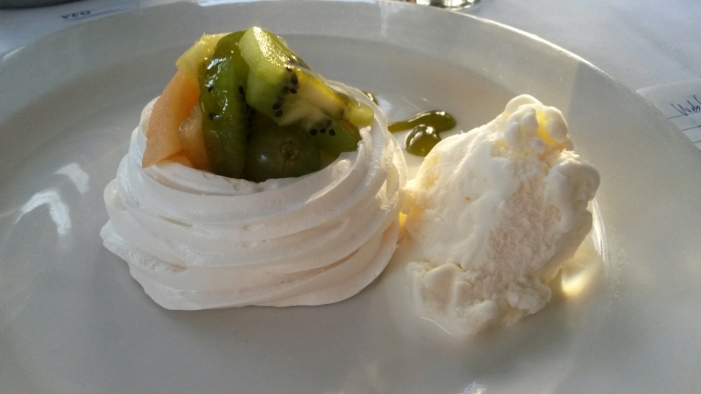
Dessert was decadent and delicious – and don’t you just love the sunlight highlights?! Seriously, I couldn’t have planned how beautiful that would look – and it’s made me so hungry all over again! ^_~

Thank you so much again Cindy and all the amazing sponsors – the gift bags were a surprising treat with some great brands and items I can’t wait to try! What kinds you wonder? There were a small selection of items from African Extract Rooibos, a Better You B12 Boost Spray, Cape Flora Mints and magazine, Bach Flower Rescue Pastilles, Playboy deodorants, as well as a plushie of Xander the dinosaur (my little one has already claimed him as her favourite new teething / cuddle buddy).
All in all it was a super event where I got to meet some lovely people, learn a few tricks of the trade and spend an enjoyable afternoon out and about. I can’t wait to start applying some of the practical tips provided and definitely look forward to attending future #CTMeetUP events.
What’s in my :: Nursing Essentials Kit
After trolling countless websites and Pinterest, I’ve gathered more than a few ideas of what to keep close at had for the early days of breastfeeding. And after several months of cuddling Amelia closely and having her reach up to me asking for milk, while yawning and nudging at my chest, I can say that I’ve now got my own personal favourite items, found below. Please do comment and let me know what nursing essentials you’ve relied on! 🙂
1. Lay out all your breastfeeding clothes – before baby arrives
My absolute number one tip for nursing, which I tell all my expecting friends (and came up with all on my own), is to put aside all your tops that you can feed in (defined as tops or dresses you are able to pull down under your breasts, those which have a cowl neck, are super stretchy, have a very low v-neck, etc) and put them in an easily accessible place. Then pack away ‘non-breastfeeding-friendly’ tops for days when you’re away from baby or stop breastfeeding. This way, you won’t be caught trying to figure out what to wear when you’re in a rush or end up cursing your outfit choice and resort to going to a bathroom to take your top off to feed baba (#notideal).
Without a doubt my favourite item to have on hand is my Kindle Paperwhite. From evening feeds to early morning ones, this little gadget has seen me through hours and hours (and hours!) of cluster feeds with Amelia.The long battery life is a bonus, as is the gentle backlight – which I’ve found to be perfect for early morning feeds, so you don’t wake your partner when moving around the room.
3. My feeding pillow
When you start out nursing, the first few feeds will be a leisurely dream, leaving you gazing at your precious little life, mesmerized by their nose and eyelashes … that is until your arms start to ache from holding your growing little one in this new and awkward position. A feeding pillow helps to keep you both comfortable – especially if you wound up with a C-section. I’d also like to recommend that you check out a variety of breastfeeding positions as often you’ll find some are much more comfortable than others (in fact, one of my favourite ones was the ‘rugby ball’ hold).You definitely don’t need one that’s top of the range as they’re all pretty identical, but do get a spare nursing cover for whichever one you pick as they can get grubby. When baba’s a bit bigger and starts sitting, it will double as a safe sitting doughnut for her.
4. A full water bottle or lunchbox-sized juice
The often talked about ‘great thirst’ is a real thing, especially when feeding at 3am and you wake up with a parched throat. A full water bottle or small juice box somewhere close by will ensure you don’t have to disrupt or delay your feed and go wandering through the house.
Like ‘the great thirst’ mentioned above, if you’re anything like me, you’ll start to find yourself getting cranky after waking just after midnight. A small snack like a healthy muffin, a block or two of dark chocolate, a handful of nuts, or some dates in an easy to open container (bonus if you can open it one-handed), worked wonders at making me less cranky early in the morning.
6. A cosy blanket
Regardless of the time of year, having some kind of blanket (or blanket scarf!) nearby is quite useful when breastfeeding, to snuggle underneath together if the fan makes you a bit cold during nap time. It’s also great if during the day you have unexpected visitors pop by to visit and you don’t have a feeding cover* close at hand. In summer I used my BabySense muslin blankets for Amelia as a feeding cover, blanket, spoegdoekkie (spit rag), peek-a-boo tent, teething rag, etc, while now as autumn creeps up and it’s getting chilly, my cosy plaid blanket scarf from CottonOn has become my best friend and I wear it almost daily, while at night it doubled as a light blanket for baba and I.
*I dropped using a feeding cover at home in the first week, and only really used it when out and about in public (as our society still thinks having a nipple peeking out from an infants mouth is somehow scandalous, while one seen under a sheer top or at the seaside is ‘sexy’ … #gofigure).
7. A breast pump
I don’t know what I would have done without my breast pump in those early days (and I still use it quite often). When Amelia was fast asleep I would pump any milk that came in (and I have to say that the milk coming in during the early days was not a gentle letdown, it was a full-on prickling-bordering-on-painful experience). So having a pump to save myself being very uncomfortable or soaking through my nursing pads was a huge plus. I picked the Medela manual breast pump (and Medela bottles) for a number of reasons and can highly recommend it! What reasons? Firstly, it’s more discreet than an electric pump and can easily fit into my handbag when out and about away from baba, secondly, Eskom turning the power off and on at random means I don’t want to be stranded in a power outage with milk leaking out that could be saved for my little girl for later. Thirdly, while I’m sure electric is great for some, I don’t really want to view myself as a milking cow just yet, and the manual pump ensures my dignity at least in this regard. I did have to size up the actual funnel attachment as the one which came with the pump was quite painful to use, but with a size up (bought from Toys R Us) I found it far more enjoyable.
8. A hairband
When you’re on your umpteenth feed of the night and you wake up with both breasts full of milk, it can be a bit tricky to remember which one was the one you last fed baba with. A hairband on your wrist will help – I used to keep mine on the wrist of the side I last fed from, and would swap it over before feeding Amelia again. It was a much simpler way to remember than some options on the market (thanks to my sis-in-law for this tip!).
9. Breast pads
While I now absolutely love my re-washable cotton breast pads (as they’re far more cost-effective for long-term breastfeeding), in the early days before my milk settled, I’d end up soaking through them in a 5 minutes once my milk started and I’d be left with embarrassing wet splotches on the front of my tops and dresses for the first few weeks, until I figured out disposable ones hold more thanks to the gel inserts, and they’re quite easy to keep in your bag (though as a price point, they are quite expensive).
10. Sports Bras
While I have four cotton nursing bras that I do use often, the Mr Price sports bras, with padding in the front, were for me an absolute lifesaver in the early days and anytime I go out. I found I could pull them down to feed Amelia very easily, and if I did leak a bit, the absorbent insert in the bras soaked up the excess milk, giving me time to quickly change out of my drenched pad before it becomes obvious to everyone what was happening (smelling like cheese for the rest of the day though … not so great). That said, they are far less breathable than cotton nursing bras and I found myself becoming quite hot while wearing them (which now the weather is becoming chilly is lovely, but it was far less enjoyable in summer).
Things I didn’t use :
My fancy-schmancy infant schedule tracking app
After buying and almost religiously filling in Amelia’s feeding times, poop times, awake times, et al, I didn’t once practically use the app for anything – not even my pediatrician (as he never asked about those things on checkups) and after a month I just stopped using it and reverted to a paper system. I used that to check off her feeding times, until even that fell away and we just settled into our own rhythm of wake, sleep, play, etc. For those curious, I never fed her on a set schedule, rather trusting her to know when she was hungry or not and feeding her according to that.
Nipple Cream
While some women swear by nipple cream (and prefer one brand over another), I haven’t ended up using the one I got at my baby shower. It has, however, made a lovely emergency lipgloss / lip-ice in my baby bag when I forgot my Labello at home. I also like that you don’t have to wash off, should you use it and your baba wakes up needing to feed. 🙂
Nursing-specific tops
While I invested in two nursing-only tops, I have to say I could very easily do without them, since I already have a variety of tops that work for nursing my little girl in.
I’d love to hear what your favourite nursing items are, and I’d love it if you’d share my post if you found it useful. 🙂
- Already have a WordPress.com account? Log in now.
- Subscribe Subscribed
- Report this content
- View site in Reader
- Manage subscriptions
- Collapse this bar
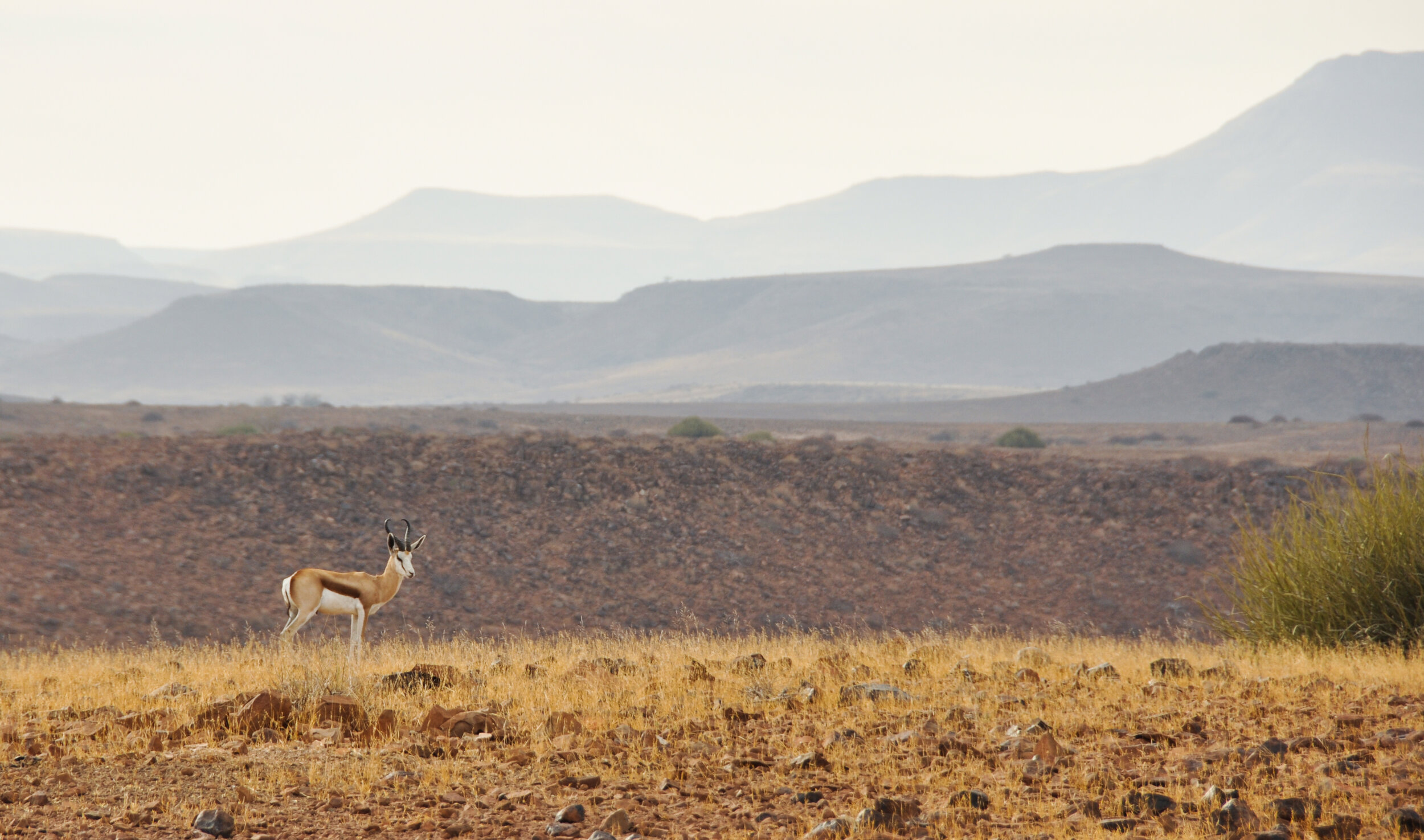
Travel and lifestyle writer
View Recent Work

Travel and lifestyle photographer
View Gallery
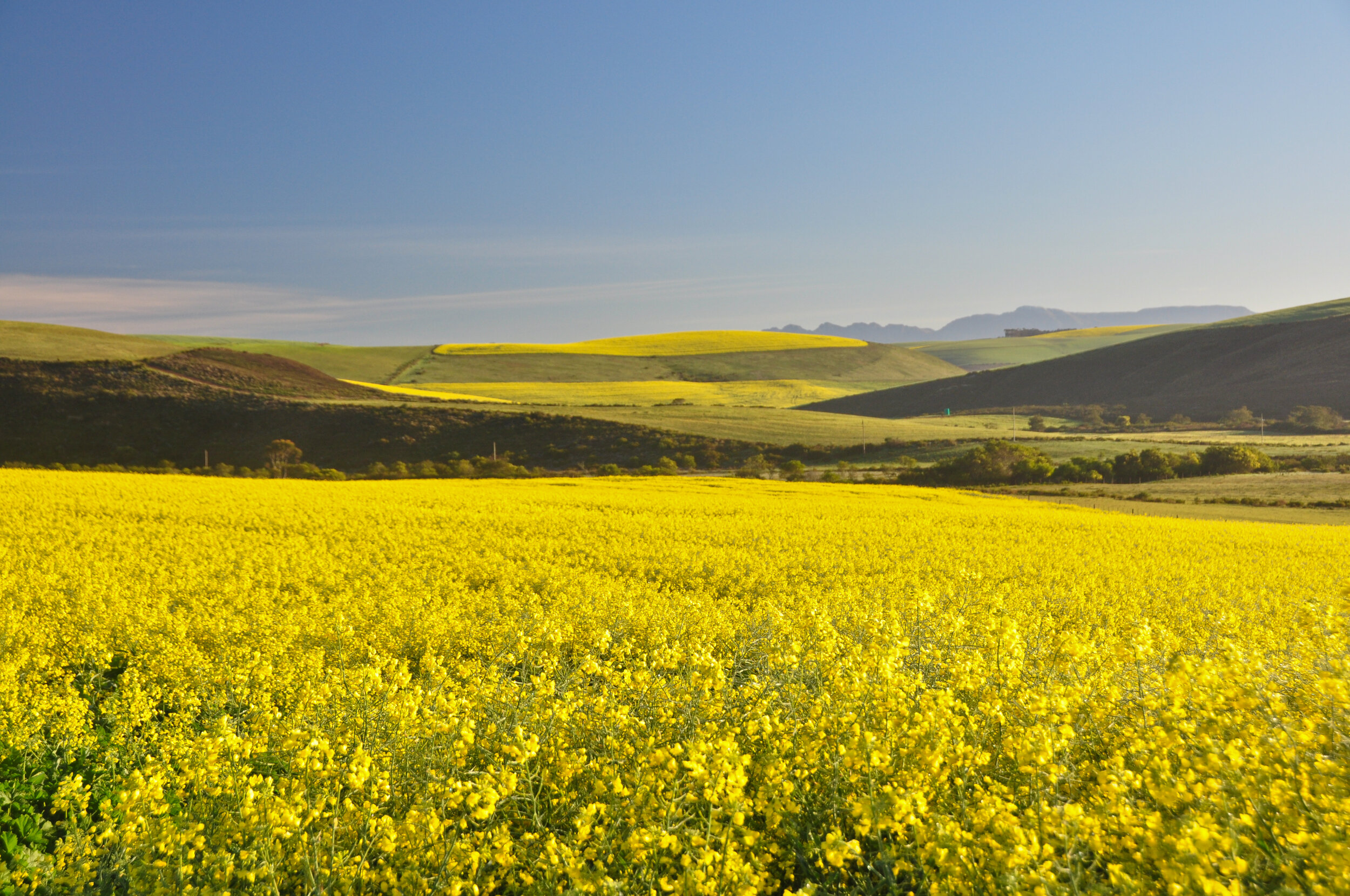
Get in touch
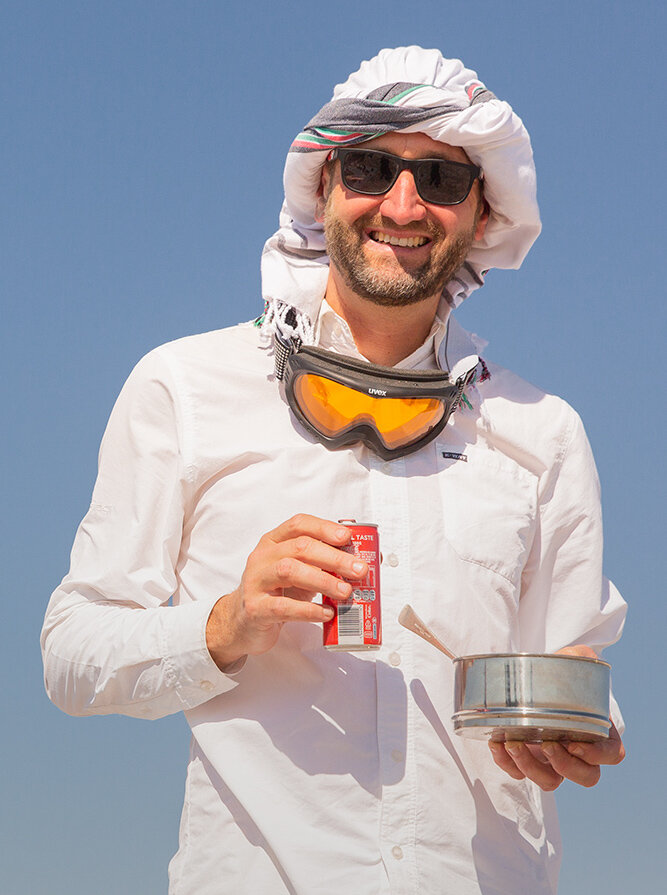
Who is on another plane?
Richard Holmes is a travel, food & lifestyle writer from Cape Town, South Africa.
He’s a regular contributor to print, online and in-flight media worldwide, with bylines in the likes of Travel+Leisure, The Independent, The Guardian, Taste Magazine, Wanted, AFAR, BBC Travel, Skift.com, CNNgo.com, and many others.
Recent Writing

For runners happy to tackle 105 kilometres of trail, with 6000m of vertical ascent, Ryan Sandes has the ultimate running challenge on South Africa’s Table Mountain.
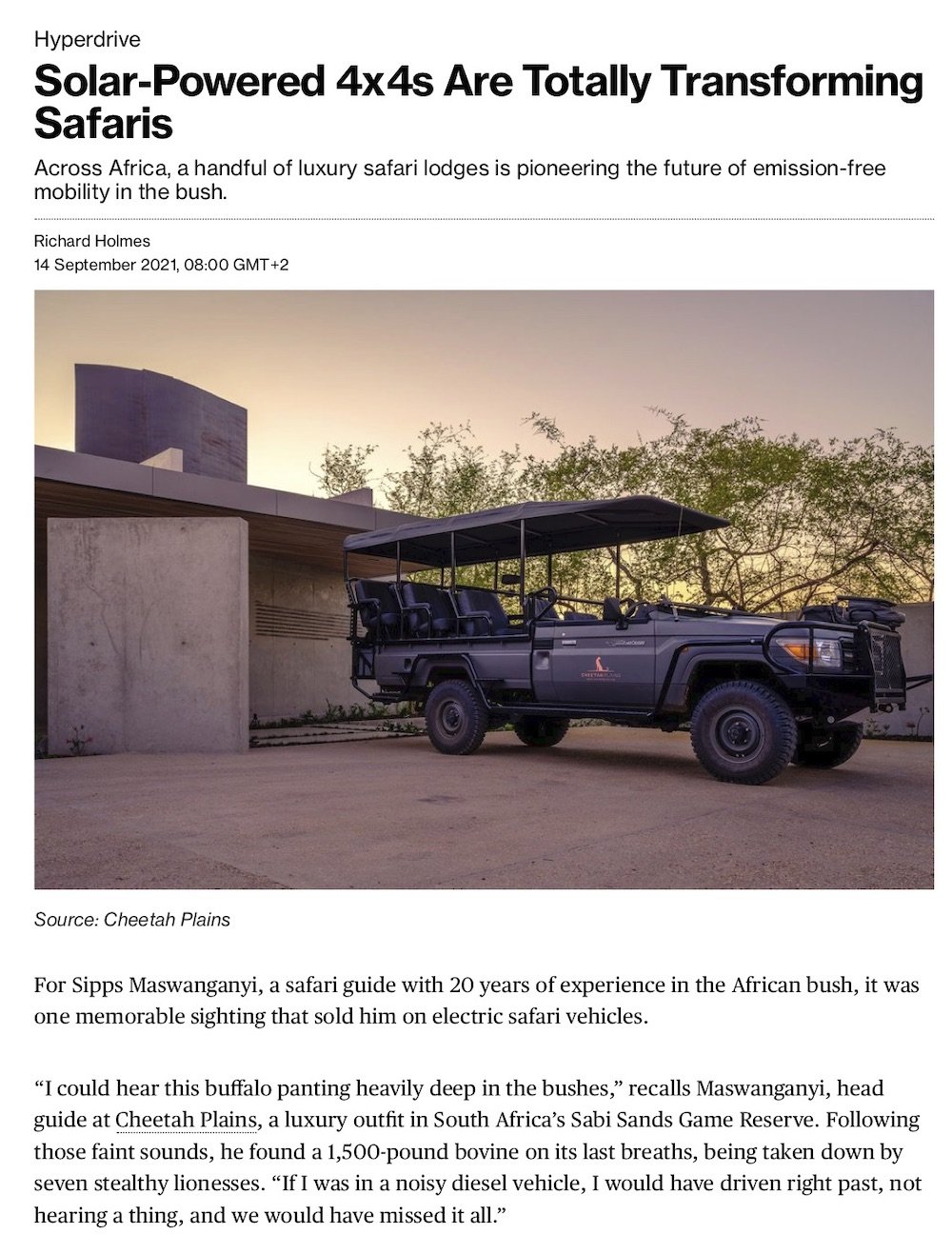
While a diesel Land Rover rumbling across the savannah in a cloud of fumes may be a safari cliche, across Africa a handful of luxury safari lodges are pioneering the future of emission-free mobility in the bush.
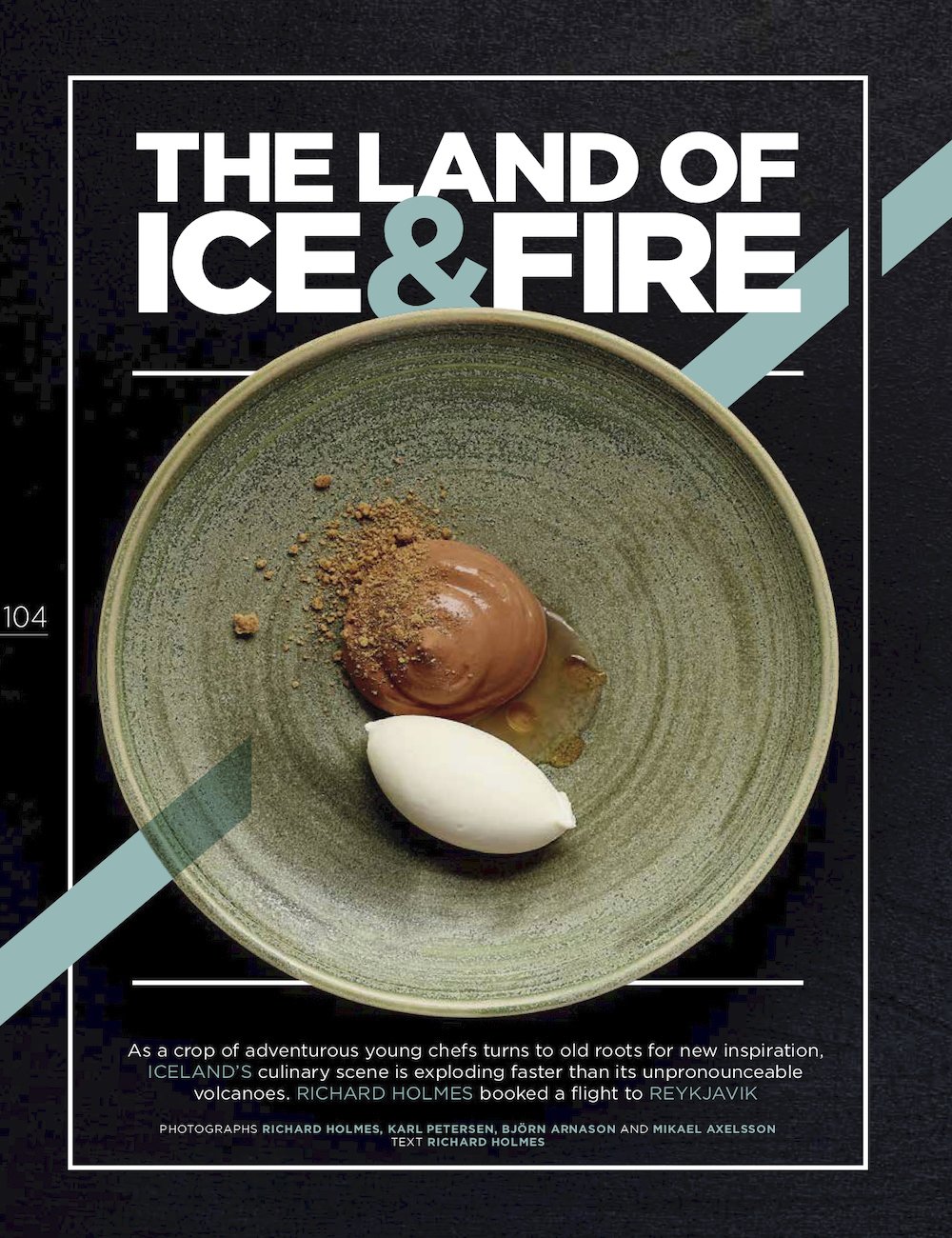
From world-famous hot dogs to a brave new world of contemporary heritage cuisine, Icelandic chefs are combining traditional recipes with global trends to forge an entirely unique style of cooking.
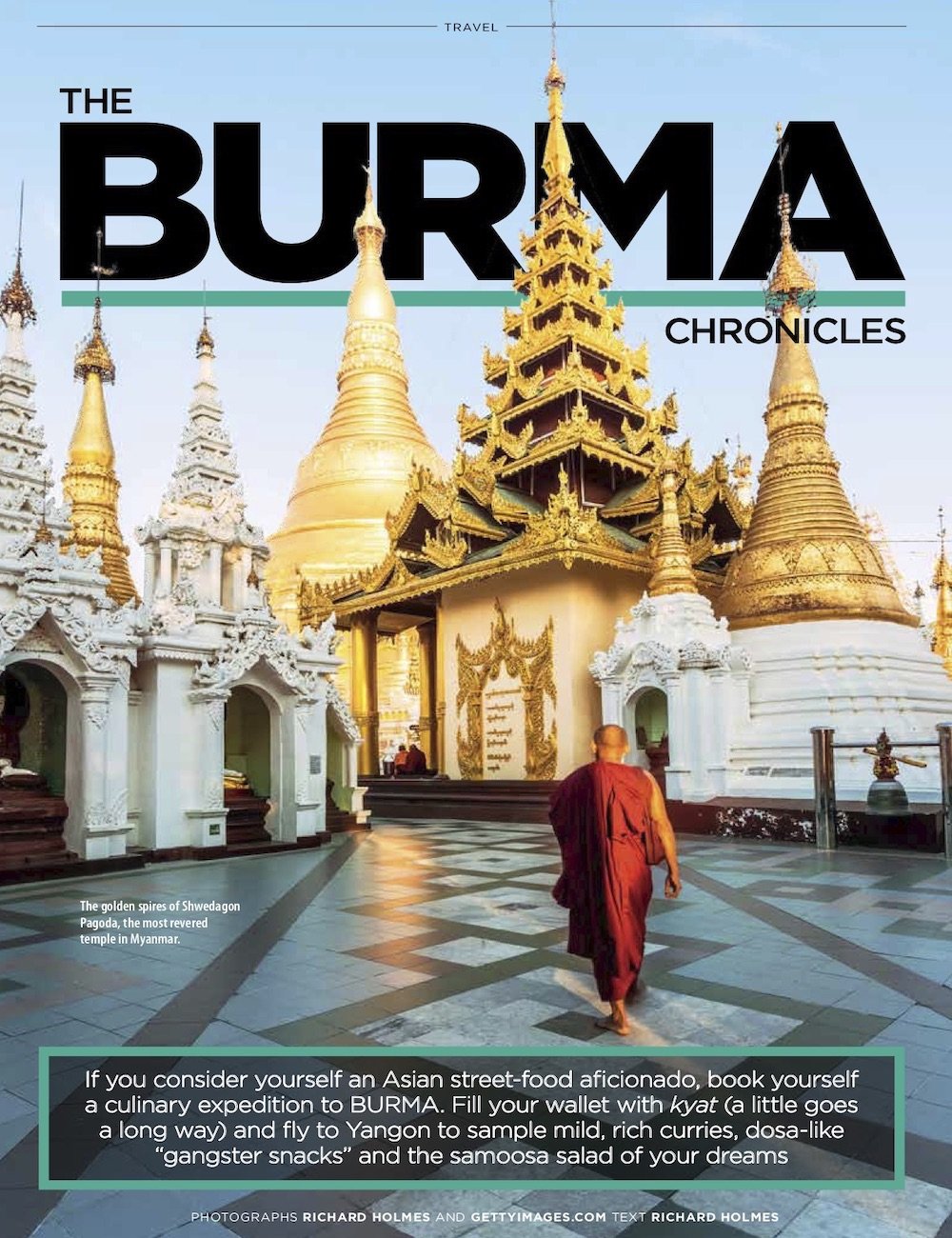
Ever wondered what Burmese cuisine has to offer? I packed a wallet full of kyat and booked a ticket to Yangon. What I found was a jewel box of new flavours and plates, from lahpet salad to the fishy national dish.
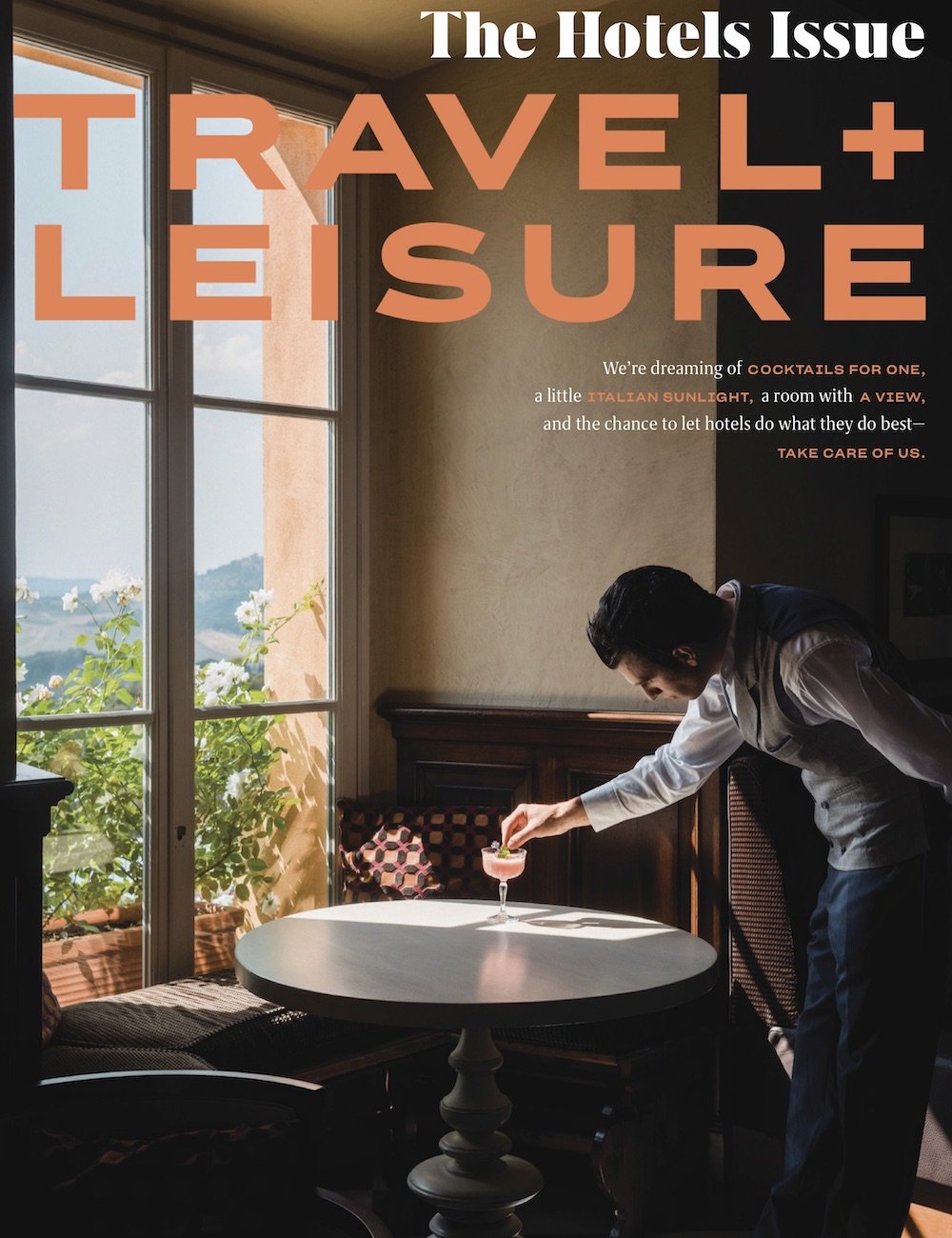
Marataba Conservation Camps flips the concept of luxury safari on its head; encouraging guests to get their hands (just a little) dirty in the name of conservation.
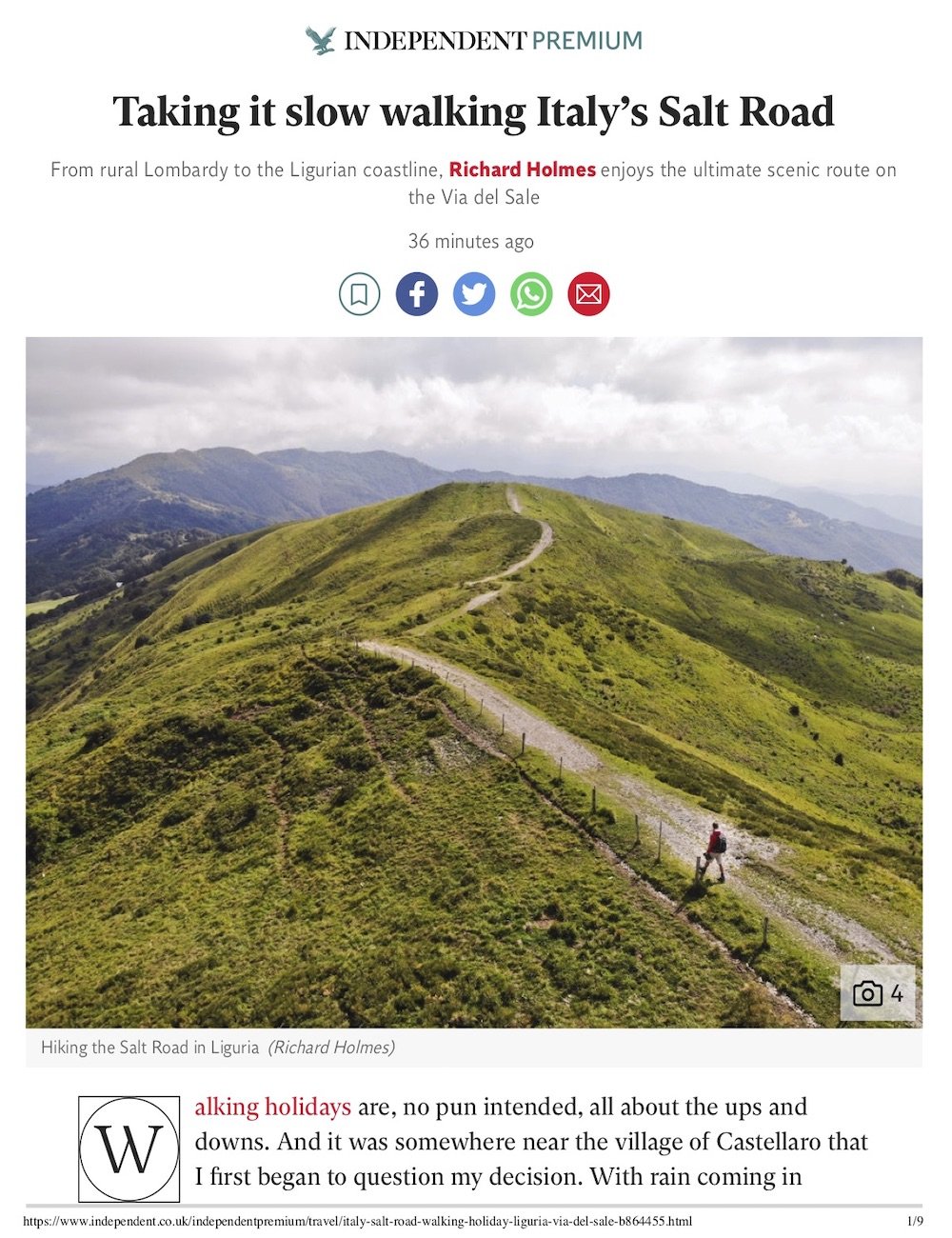
Feeling the need for a good stroll – with a side order of handmade salami and summer truffles – I ate, and walked, my way through the Ligurian Apennines of northern Italy.
Latest Postcards, and images from Instagram

Icon of the Seas, the newest class to join the Royal Caribbean International fleet, blows the competition out of the water when it comes to squeezing more, bigger and better onboard a cruise ship.

SafariBookings Expert Panel
We have gathered together an expert panel of the world's most renowned travel writers specializing in Africa. These award-winning writers and safari specialists are responsible for creating and informing our content. This includes writing more than a thousand firsthand reviews of national parks and reserves. They also contribute to our detailed park and country travel guides. Let our experts guide you to finding your perfect African adventure.
The Panel Members

Alan Murphy
Alan is a travel writer and author of over 20 Lonely Planet guidebooks, including the guides to Southern Africa and Zambia & Malawi.

Anthony Ham
Anthony is a photographer and writer for travel magazines and Lonely Planet, including the guides to Kenya and Botswana & Namibia.

Ariadne van Zandbergen
Ariadne is a renowned African wildlife photographer whose work is featured in many well-known guidebooks and magazines.

Brian Jackman
Brian is an award winning travel writer, author of safari books and regular contributor to magazines such as BBC Wildlife and Travel Africa.

Charlotte Beauvoisin
Charlotte lives in Uganda and is a writer, blogger, volunteer and promoter of birding, conservation and responsible tourism. She writes for Fodor’s, Horizon Guides and Bradt, and runs an award-winning blog.

Christopher Clark
Christopher is a British travel writer and has contributed to various Fodor's guidebooks and a range of travel magazines.

Dale R Morris
Dale is a multi-award-winning writer and photographer with more than 500 published magazine articles featured in magazines such as National Geographic, BBC Wildlife, Travel Africa, and CNN Travel.

Emma is an award-winning travel writer for Rough Guides, National Geographic Traveller, Travel Africa magazine and The Independent.

Gemma Pitcher
Gemma authored several Lonely Planet guidebooks, including the guides to Africa, Kenya, Tanzania and South Africa.

Harriet Nimmo
Harriet is a zoologist with more than 20 years’ experience. She has the privilege of working with the world’s top wildlife photographers and photo-guides.

Heather Richardson
Heather is a British travel / conservation journalist, and has written for publications and broadcasters such as the BBC, Departures, the Telegraph and the Sunday Times.


James Bainbridge
James is a travel writer and author of many Lonely Planet guides, including senior author of the guide to South Africa, Lesotho and Swaziland.

Kim Wildman
Kim is a travel writer who authored and updated over 15 guidebooks, including Lonely Planet's South Africa and Bradt's Tanzania guides.

Lizzie Williams
Lizzie is a reputed guidebook writer and author of the Footprint guides to South Africa, Namibia, Kenya, Tanzania, Uganda and Zimbabwe.

Lucy is travel writer for a range of publications, including Lonely Planet's guides to Africa, Southern Africa and South Africa.

Mark Eveleigh
Mark is a travel writer who grew up in Africa and has written over 700 titles for Condé Nast Traveller, Travel Africa, BBC Wildlife and others.

Mary Fitzpatrick

Mary is an acclaimed travel writer and author of many Lonely Planet guidebooks, including South Africa, Tanzania, East Africa and Africa.

Mike is an award-winning wildlife writer, former editor of Travel Zambia magazine and author of the Bradt Guide to Southern African Wildlife.

Nana Luckham
Nana is a travel writer and author of multiple guidebooks, including the Lonely Planet guides to Africa, Zambia & Malawi and South Africa.

Paul Murray
Paul is a travel writer, author of the Bradt guidebook to Zimbabwe and is closely involved in promoting tourism to Zimbabwe.

Philip Briggs
Philip is an acclaimed travel writer and author of many guidebooks, including the Bradt guides to Uganda, Tanzania, Kenya and South Africa.

Stephen Cunliffe
Stephen is a travel writer and avid conservationist whose work appears in prestigious magazines such as Africa Geographic and Travel Africa.

Stuart Butler
Stuart is a travel writer and author of numerous Lonely Planet guidebooks, including 'Kenya', 'Rwanda' and 'Tanzania'.

Sue is an award-winning writer who specializes in African travel and conservation. She writes for national newspapers, magazines, Rough Guides and Lonely Planet.

Tim is a travel writer who has covered 10 African countries for Lonely Planet's Africa, East Africa and West Africa guidebooks.

Best South African books to fuel your wanderlust
As you might know, I’m a proud South African native, making me a little (or a lot) biased about what the country has to offer – some of the world’s best wines, most delicious cuisine, iconic landmarks like Table Mountain and world-class beaches. But even if you can’t visit my country in the flesh, you can already experience its magic through literature. With that in mind, we’ve put together a cracking list of 30 of the best South African books; from memoirs and non-fiction to stand-out novels, teen lit and more!
While it’s particularly difficult to categorize some of these books, we’ve tried to curate collections of non-fiction including historical and biographical books as well as a ‘who’s who’ of fiction novels covering everything from young adult to racy thrillers. That said, picking up (or downloading) any of the books on this list should give you a taste of what South Africa has to offer the avid bookworm…

Best South African books 2020 at a glance
Now just in case you don’t make it all the way down our bumper list of the best books about South Africa, or by South African authors, we thought we’d help you along by suggesting a few ideas based on your usual reading fodder:
- Best book for film buffs: Playing the Enemy – John Carlin
- Best South African book for teens: Spud – John van der Ruit
- Best book for South African history buffs: A History of South Africa – Leonard Thompson
- Best book to explore South Africa’s apartheid: Country of my Skull – Antjie Krog
- Best memoir: Long Walk to Freedom – Nelson Mandela
- Best book to make you laugh: Born a Crime – Trevor Noah
- Most thrilling South African novel: Thirteen Hours – Deon Meyer
- Best collection of short stories: Fools and Other Stories – Njabulo Ndebele
- Best tearjerker: Cry, the Beloved Country – Alan Paton
- Best contemporary South African novel: Coconut – Kopano Matlwa
Give these a listen instead, with Audible . Whether you’re an avid Kindle reader or prefer the feel of pages beneath your fingertips, it’s also worth trying out audiobooks; the perfect way to read all of these books if you’re busy and on the go. Audible actually offers a free trial Get it here! , or you can take them up on their special offer, which gets you 50% off their membership for 3 months. Get that offer here! .
Non-fiction | Memoirs and biographies of South Africans
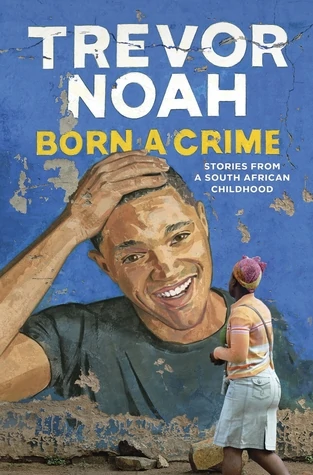
Born a Crime by Trevor Noah
One of the more contemporary memoirs on this list, comedian Trevor Noah recounts his upbringing in South Africa, told with his customary wit. Now a pretty successful funny man on the international stage and host of The Daily Show, Noah grew up poor and marginalized, especially as a ‘mixed race’ child in what was essentially a ‘black or white’ South African during apartheid.
You’ll fall in love with Trevor’s ‘Gogo’ or grandmother, you’ll find yourself shaking your head at some of his antics and, by the end, you’ll definitely be laughing in wonder at how much this skinny South African kid achieved, as he tells his tale in Born a Crime .
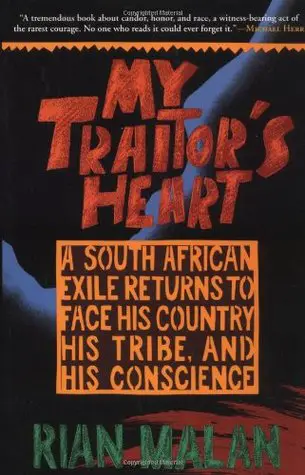
My Traitor’s Heart by Rian Malan
The secondary title of this book really says it all: ‘A South African exile returns to face his country, his tribe and his conscience.’
Malan, a white Afrikaans speaking South African grew up in a pro-apartheid family where he was actually related to Daniel Francois Malan, one of the architects of apartheid itself. However, he didn’t identify with his family’s beliefs and, to avoid involvement (and mandatory army conscription), he moved to Los Angeles to work as a journalist. The book covers Malan’s return to South Africa in the 1980s, describing what he found in compelling, if slightly unsettling detail. A book not for the weak of stomach, but definitely captivating reading.
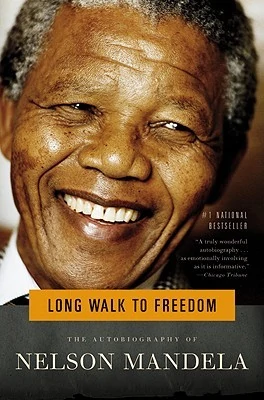
Long Walk to Freedom by Nelson Mandela
One of the most beloved statesmen to have ever lived, Nelson Mandela is more than an icon; both in South Africa and across the world.
This book is not a novel but rather the memoir of Mandela and paints his life in broad multicoloured strokes; a life of extraordinary pain, adversity but also of triumph. Another one of the best South African books to read before you go.
Non-fiction | Historical South African books
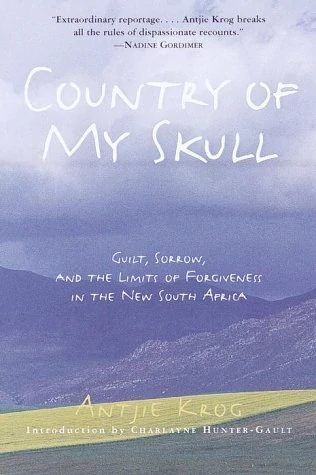
Country of my Skull by Antjie Krog
Like many books set in South Africa, this one deals with issues around apartheid. In this instance, about the Truth and Reconciliation Committee, tasked with righting the wrongs of the past.
The book, like the TRC itself, is quite traumatic but a fascinating look inside the aftermath of politics. It is one of the most eye-opening books about racism and the struggles that happened in South Africa.
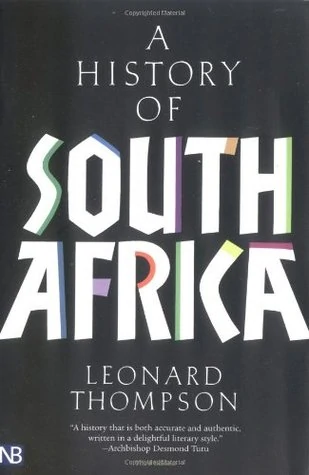
A History of South Africa by Leonard Thompson
This non-fiction work is really what it says on the cover: a definitive history of South Africa. Tracing the country’s early origins from when the first known humans inhabited its borders to the leadership of Nelson Mandela and Thabo Mbeki (it is often updated), this is a factual, sometimes dry, albeit interesting look at the country’s development.
While it does gloss over the Dutch and British colonial history, anyone looking to find out more about apartheid and the ‘Rainbow Nation’ of the New South Africa should give this one a look.
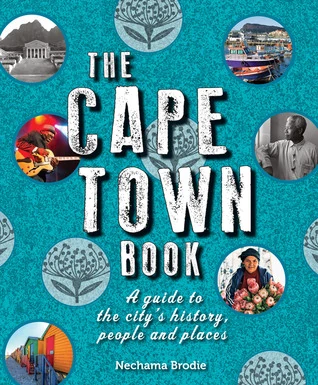
The Cape Town Book by Nechama Brodie
Anyone with even a passing interest in Cape Town, aka The Mother City, should get their hands on a copy of the Cape Town Book , a fascinating insights into the city. Brodie touches on everything from the beaches and the big attractions like Table Mountain to some of the untold stories from generations of local families, covering everything from the poorer families living in the slums to those in the richer suburbs.
Beautifully illustrated and beautifully written by one of my favourite South African authors, this is a portrait of my hometown that everyone should own.
Related: Heading to Cape Town? Check out our ultimate Cape Town itinerary here !
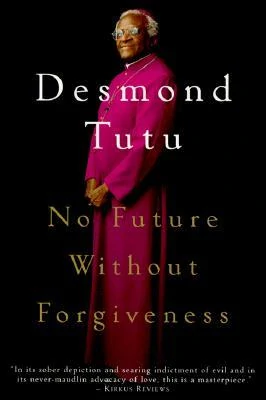
No Future Without Forgiveness by Desmond Tutu
If you enjoyed Krog’s book on the Truth and Reconciliation Commission and wanted to delve a little deeper, this is the book for you.
Written by Nobel Peace Prize winner, Archbishop Desmond Tutu, it covers his role as Chairman of this body, tasked with uncovering the atrocities of South Africa’s apartheid era.
It’s a dense read but is jam-packed with wisdom and Tutu’s very charming wit.
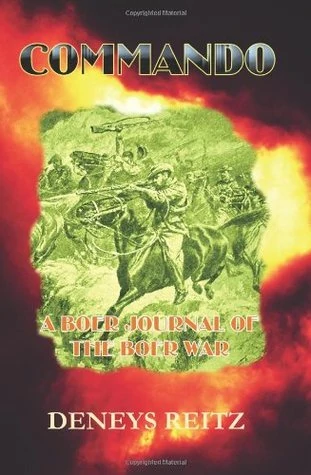
Commando: A Boer Journal of the Boer War by Deneys Reitz
It’s a war story not often told beyond South Africa’s borders: the Anglo Boer war that kicked off in 1899 between the occupying British and a ragtag bunch of South African farmers gussied up as soldiers.
This personal account of Reitz brings the Boer War to life, as seen from the saddle as he goes into battle. He not only sees a lot of action during his time but somehow encounters some of the most legendary figures – Smuts and Churchill to name just two.
If you like war novels, this is a must-read South African book for you.
Non-fiction | Other books about South Africa
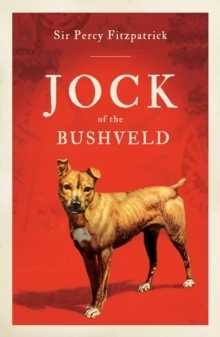
Jock of the Bushveld by J. Percy FitzPatrick
While Lee vividly remembers the film from her childhood, it’s the book that really packs a punch. Jock of the Bushveld tells the tale of Jock, a Staffordshire bull terrier who belonged to FitzPatrick. The author was a transporter who essentially moves goods across the country via oxen, in the early 1900’s during the country’s gold rush.
Jock, a bit of a mongrel dog, is his hunting companion as they eke out an existence on the plans of the then Transvaal region (now known as Gauteng). It’s one of the most iconic animal stories of all time, and undoubtedly one of the ultimate South African books
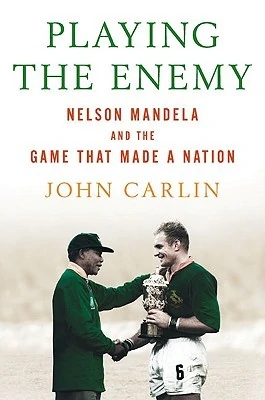
Playing the Enemy: Nelson Mandela and the Game That Made a Nation (also known as ‘Invictus’) by John Carlin
From the pen of acclaimed South African journalist, John Carlin, this book is an ode to Nelson Mandela, the statesman, which fuses politics with the global game of rugby, with the 1995 Rugby World Cup as its apex.
Chronicling South Africa’s difficulty in embracing its new identity after apartheid was abolished, this compelling book tells the story of reunification and the courage of Mandela as he uses sport to unify a nation. Once you’ve read this book, make sure you watch the film, Invictus , starring Matt Damon and Morgan Freeman but – be warned: it’s a tearjerker!
Fiction | Short Stories and Poetry about South Africa
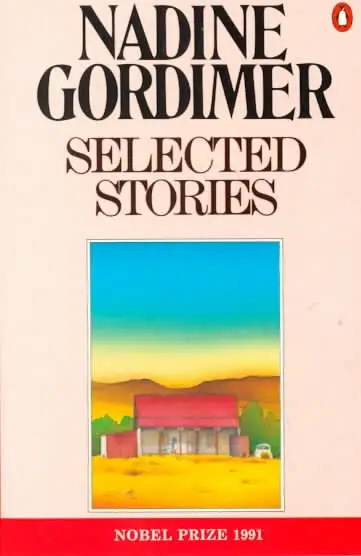
Selected Stories by Nadine Gordimer
For lovers of short stories, this one is a doozy. Gordimer, one of the country’s literary greats, handpicks some of her favourite short stories she’s ever penned in this wonderful collection of tales. Gordimer is one of my most beloved South African writers, and this compendium is jam-packed with lovely little stories that pack a punch.
It’s arranged in chronological order – from the ‘Is there nowhere else where we can meet’ to ‘Africa Emergent’ – and almost shows how Gordimer’s writing and influences changed over time. My pick? Probably ‘Not for Publication’ stands head and shoulders above the rest.
If you enjoy this writing, check out some of Gordimer’s more famous works including July’s People, a World of Strangers and Burger’s Daughter .
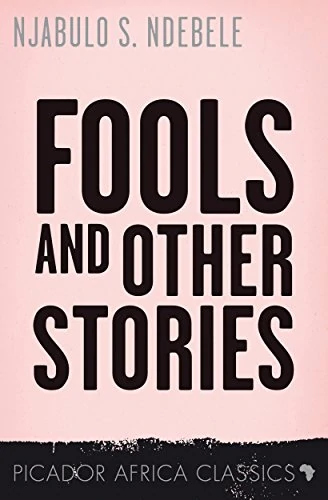
Fools and Other Stories by Njabulo S. Ndebele
This is a collection of five short stories, all with slightly different flavours and offering up South African culture in its many shades. All of them are set in the impoverished townships of South Africa and paint a vivid picture of life on the edges of society. My favourite short? ‘ Uncle ’.
Mafeking Road and Other Stories – Herman Charles Bosman
Definitely one of my favourite South African authors, Herman Charles Bosman’s collection of short stories is a great read. Narrated by ‘Oom Schalk’, an impoverished farmer living in the small town of Groot Marico, the book covers a glut of simply told but stunning stories about Afrikaans life in the late 19 th century.
Covering everything from leopards and snakes to love stories and music, this book captures the spirit of South Africa in it’s telling, almost as if ‘Oom’ is continuing the oral tradition of storytelling, somehow translated into print.
Fiction | Teen and young adult books set in South Africa
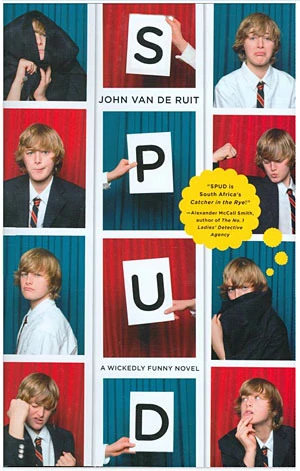
Spud by John van der Ruit
If you’ve ever read The Secret Diary of Adrian Mole, Aged 13¾ by Sue Townsend, you’ll absolutely adore Spud . A South African take on Adrian Mole, Spud focusses on teenage boy, Spud Milton, a young kid about to start at a fancy boarding school. This is a great book for teens (male and female alike), as it navigates the growing pains of growing up with two hilariously dysfunctional parents amid a high-stakes, slightly snobby high school atmosphere. With a lot of talk of hormones and holidays at the sea, Spud is a real page-turner, and full of laughs!
The first book was so successful that Spud is now a series of four novels.
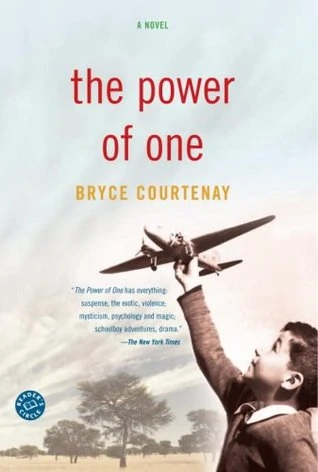
The Power of One by Bryce Courtenay
Set in rural South Africa in the 1930’s, Courtenay’s acclaimed novel features Peekay, a young boy sent to boarding school. With British roots, he struggles against the local Boer (Afrikaans speaking) children before being packed off on a train where he meets the unique ‘Hoppie’, who helps ignite his love of boxing. Sent to live with his grandfather in a quieter rural town, Peekay undergoes an amazing journey where he then uses his love of boxing and botany to connect with people across the fraught colour and race boundaries of South Africa.
While Courtenay is an Australian writer, he really captures the essence of South Africa during the historic times of World War II and of a young English boy, trying to navigate the difficult political situation in the country.
If you like this debut novel, do check our Courtenay’s other highly regarded book, Tandia , considered the sequel to The Power of One .
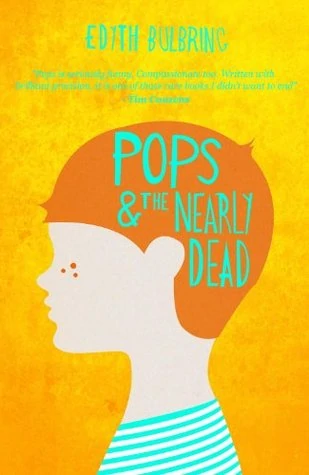
Pops and the Nearly Dead by Edyth Bulbring
This book aimed at teenagers is a charming read for older adults too, as it showcases both the story of Randolph, a young boy and his grandfather, Pops. When Randolph’s folks swan off to Singapore, he goes to stay with Pops in his retirement village.
What Randolph believes will be a few months with a bunch of ‘nearly dead’ elderly people at the retirement home turns into a thrilling journey where you can absolutely relate to both characters – Randolph as he comes of age and Pops as he struggles to make peace with aging. It’s a book best enjoyed with a strong cup of tea and a slice of South African melk tert ; a real joy to read!
Fiction | Stories about South Africa’s culture
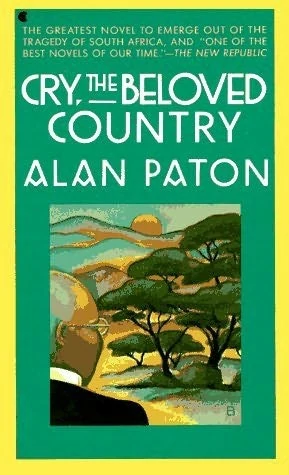
Cry, The Beloved Country by Alan Paton
Chronicled in a film of the same name, this book is top of the must-read list of best South African novels. It’s a tearjerker – profiling pastor Stephen Kumalo and his son and showcasing apartheid (institutionalised racism) in all its gritty shades.
Cry, The Beloved Country must be one of the most famous books about the Rainbow Nation, definitely one of the most important books in 20 th century South African literature and, if you’re ever thinking of going to South Africa, the first one you read before your trip.
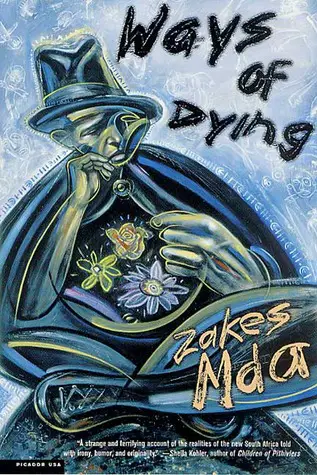
Ways of Dying by Zakes Mda
Mda is now a well-known author on the South African scene, made famous by books like this – his first novel. It’s an interesting idea as the main character, Toloki, invents himself as a ‘professional mourner’, attending funerals to support those grieving after deaths caused by poverty or the rampant crime.
Through this he meets Noria, a girl from his home village, which takes over the remainder of the novel as they struggle to find dignity amidst all the pain around them. An incredibly sad and unputdownable book for this list of the best South African books.
Want more Mda on your bookshelf? Check out the Heart of Redness .
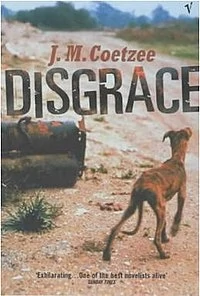
Disgrace by JM Coetzee
I remember the first time I read Dis g race ; tucked into a sunny corner of my bedroom unable to put it down. Coetzee has won a Nobel Prize for Literature, making him one of the country’s most successful authors and this book, is undoubtedly his best work.
Its set in post-apartheid South Africa with the main character painted as a middle-aged white university professor who is left ‘disgraced’ after a relationship with a student.
If you like Disgrace, you could also read Coetzee’s Life and Times of Michael K or Waiting for the Barbarians .
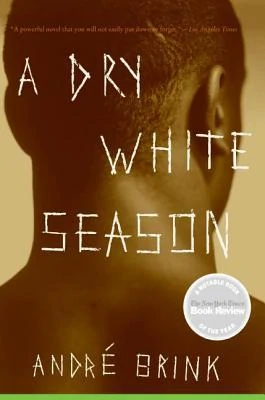
A Dry White Season by Andre Brink
Another cracker of a South African novel that has been made into a feature film is A Dry White Season , the compelling novel from Andre Brink. It’s not an easy read, telling the story of Ben du Toit, a white teacher during South Africa’s apartheid era who is shocked by the arrest and ‘suicide’ of the school’s black janitor.
Du Toit decides to investigate himself which has some pretty disastrious outcomes for him and his family. This novel is a little difficult to get in to but, once you’re about 50 pages in, you’ll definitely be enthralled.
Fiction | Contemporary South African fiction
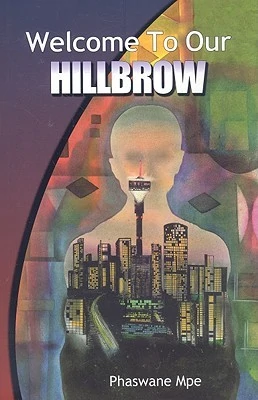
Welcome to Our Hillbrow by Phaswane Mpe
It’s not easy to explain Hillbrow to someone who hasn’t set foot in it but Mpe does a marvellous, if macabre job. The suburb, set in the middle of crime-ridden Johannesburg, shows the melting pot of South Africa in vivid terms.
The book is particularly short – only 124 pages so more a novella – but crams a lot into it’s brief account of the racism, xenophobia, poverty and disease that permeates this area. It’s a weighty book in subject although not size; undoubtedly punching above its class. Shortlisted for the Sunday Times fiction prize, this is definitely one for your list on the best books about South Africa.
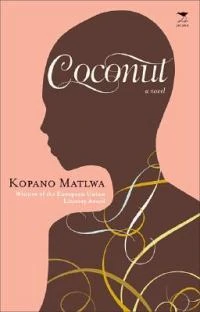
Coconut by Kopano Matlwa
Like the term ‘oreo’ in places like the United States, the term ‘coconut’ is a slur used in South Africa for those born black but who consider themselves ‘white on the inside’, akin to white coconut flesh. The term is used with great flair here in this book about two young girls of colour – Ophilwe and Fikile – both of who are growing up in post-Apartheid South Africa and trying to adjust to become part of white suburbia.
Both women have dreams to fulfil but one has the support of her family and money to do so, while the other has neither. It’s a beautifully told book of racial bias and gets under the skin of South Africa’s Rainbow Nation mantra to show the painful journey of black women in South Africa trying to rise to the top.
Fiction | Best thriller books set in South Africa
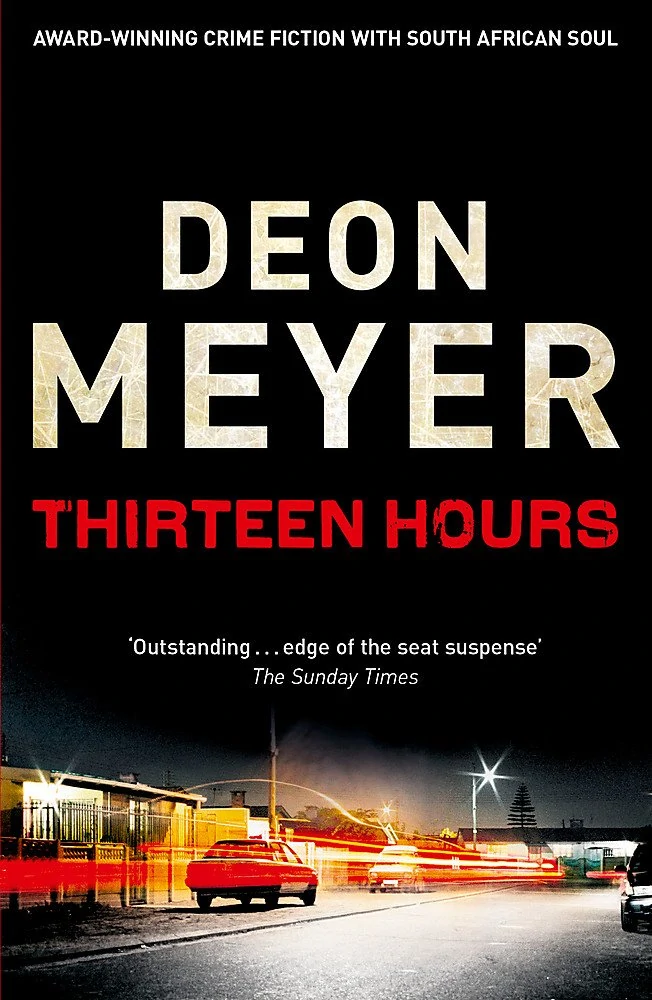
Thirteen Hours by Deon Meyer
Meyer is another stalwart of South African fiction and this book is his finest.
It revolves around Benny, an alcoholic policeman investing two murders.
He’s a conflicted character but one that you can’t help liking, despite his faults.
It’s one of my unputdownable novel suggestions.
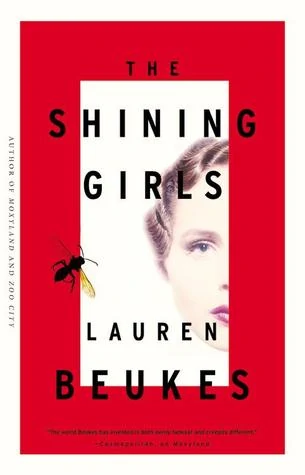
The Shining Girls by Lauren Beukes
This list wouldn’t be complete without a novel from one of the newer voices in South African fiction, Lauren Beukes. The Shin i ng Girls – about a serial killer and a survivor – is her most acclaimed work, shovelling up awards across the continent. Now this book is actually set in Chicago rather than her native Cape Town, but its still a compelling (if often bizarre read).
Following the protagonist, Harper, a time-travelling serial killer you’ll find the book covering his attempts to kill ‘shining girls’, while also juxtaposing that with narrative from one of his victims who survives her attempt, Kirby. It’s odd, it’s a little stilted but its still a fascinating book from a now famous contemporary South African author.
If you enjoy this book, you’ll also love Beukes’ “ Zoo City ” or “ Moxyland .”
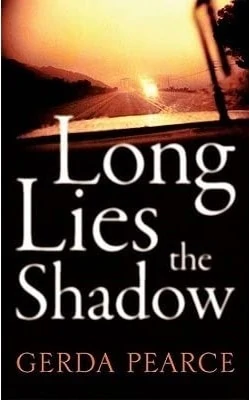
Long Lies the Shadow by Gerda Pearce
In the style of big international thrillers, Pearce’s first novel has a fast pace and a global reach.
Chronicling four characters – Gin, Vivienne, Michael and Nick – you see their intertwined lives hop between Cape Town and London in a story that has all the right ingredients: a funeral, an unplanned pregnancy and a suicide. It’s well-written, has heaps of rich descriptions and very relatable characters that you empathize with.
That’s it for our roundup of the best South African books – we hope you enjoyed it and it added a few captivating choices to your must-read bookshelf. Did we skip any that you’d absolutely recommend? Do let us know in the comments or drop us a line as we’d love to hear from you.
If you’re looking to travel even further than your armchair, we also have some more Best Travel Books to check out, including the Best Books about Jordan , the ultimate novels from Brazil and wanderlust-inspiring novels about Turkey .
Want to save this for later? Why not pin it!
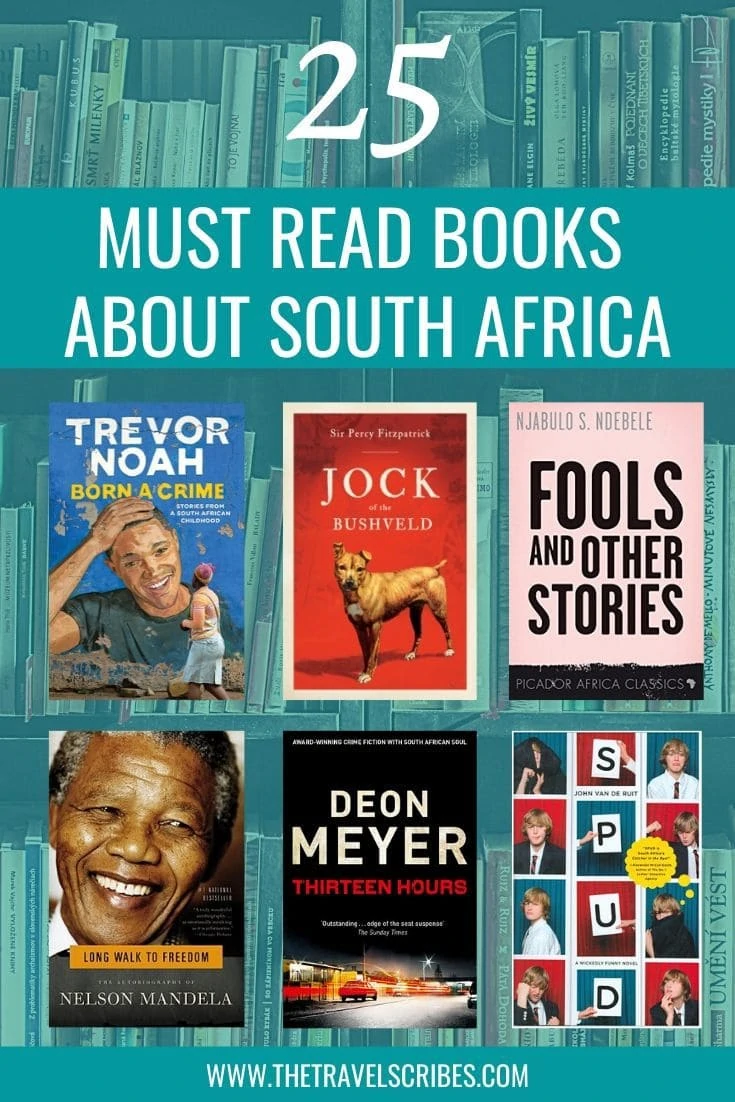
Leave a Reply Cancel reply
Your email address will not be published. Required fields are marked *
Website URL
Follow on Pinterest
Where are we now?
London, England
Our Favourite Post
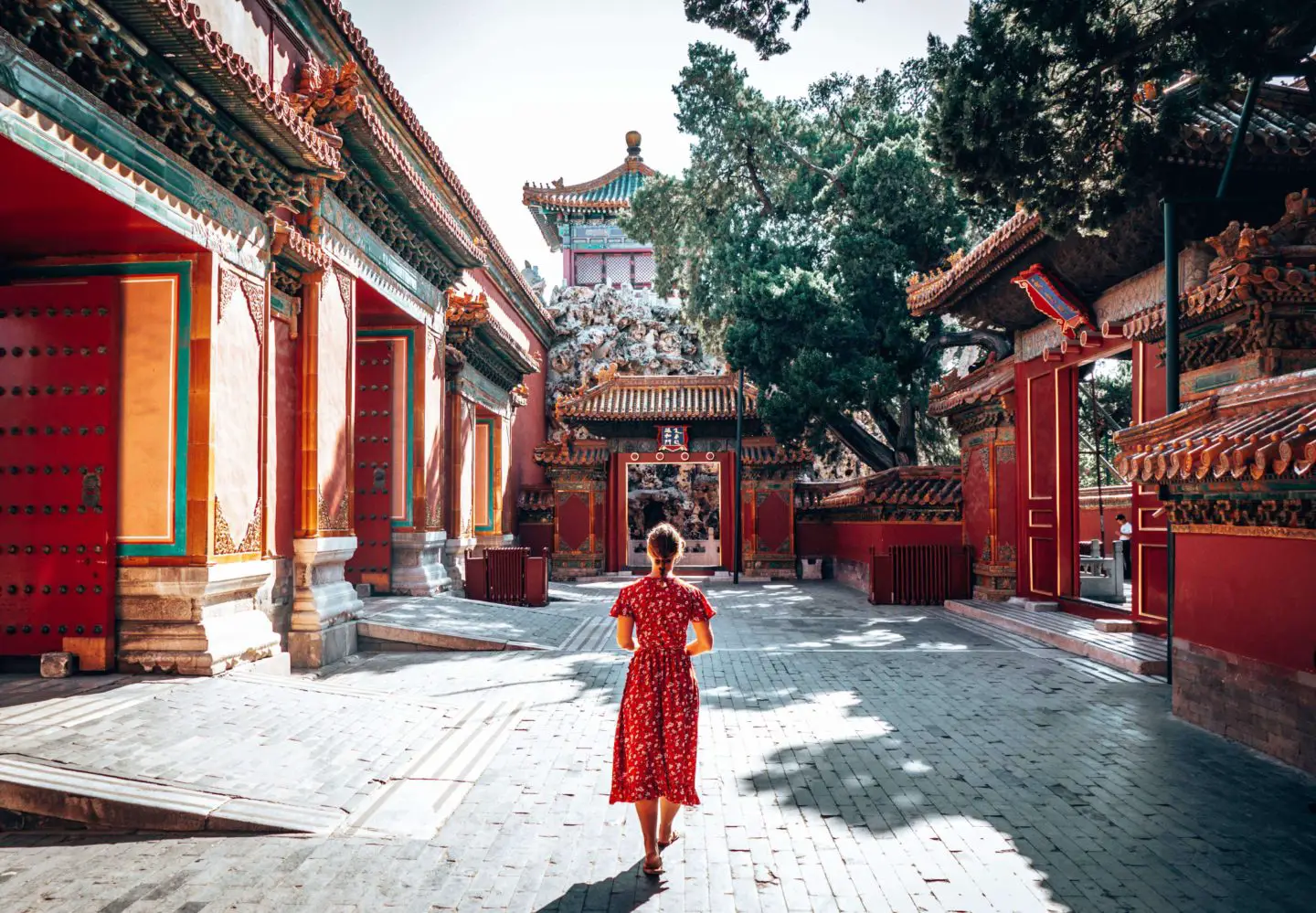
A Beijing Itinerary | 4 days in China’s bustling capital
Beijing is massive. Third largest city in the world kind of massive. So how do you fit all that you need to see in the ancient city, formerly known as Peking? Well, we hope that…
- Travel Guides Plan your adventure
- Destinations Our favourite places
- Tours Book a trip
- Travel Companies Independent specialists
- Travel Guides
- Destinations
- Travel Companies
Decolonising African travel—and travel writing
How a new generation is redefining african tourism.
Mazuba Kapambwe
Travel writing in Africa has always been an overwhelmingly white affair. Early accounts from 19th century explorers like Henry Morton Stanley and fiction writers like Joseph Conrad depicted Africa as uncivilised, mysterious and barbaric, reflecting the racist attitudes that underpinned European empire building.
Although overt racism no longer has a place in contemporary African travel writing, colonialism casts a long shadow. In his 2006 satirical essay, How To Write About Africa , Kenyan author Binyavanga Wainaina wrote: “The continent is full of deserts, jungles, highlands, savannahs and many other things, but your reader doesn’t care about all that, so keep your descriptions romantic and evocative and unparticular….Your African characters may include naked warriors, loyal servants, diviners and seers, ancient wise men living in hermitic splendour...”
That was nearly 15 years ago but the brochures, websites, travel articles, and the continent’s tourism industry itself is just as cliched—and just as white—as they were back then. Why has so little changed?
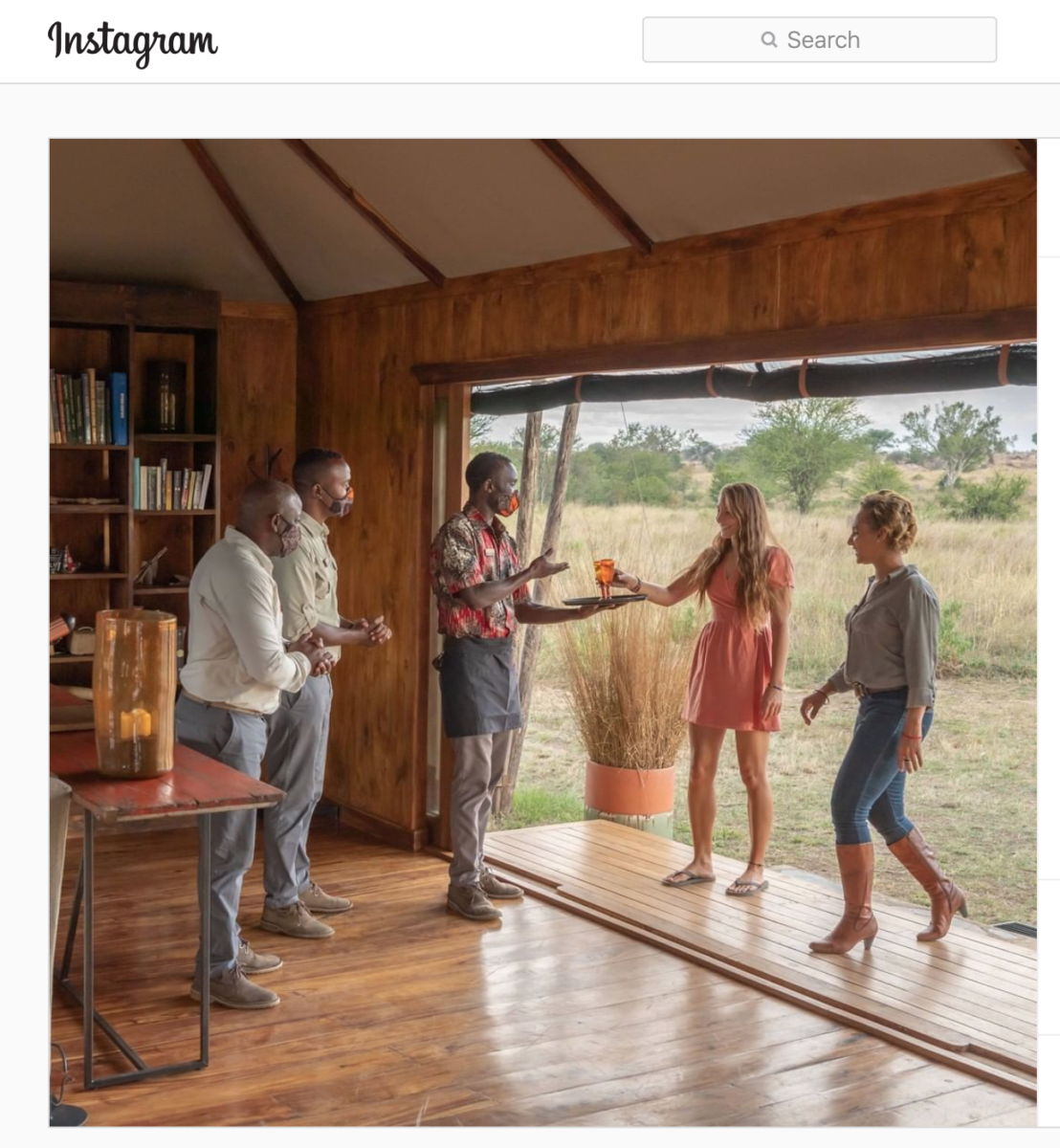
Colonial undertones still pervade much of Africa's tourism marketing
A segregated industry
Although most African nations gained their independence from the mid to late 20th century, tourism to the continent has remained a Western, and more recently Chinese, oriented industry. It’s only now that covid has brought the lucrative international tourism trade to its knees that African destinations are stopping to reconsider their domestic markets .
But there are huge logistical and financial hurdles to African domestic and internal travel, many of which are so far removed from mainstream tourism that they’re usually taken for granted by our international visitors.
For starters there’s the question of visas. Even when travelling within our own continent, African passports don’t carry the same clout as many Western ones. The 2019 Visa Openness Report , compiled and published by the African Development Bank, reveals that Africans need visas to travel to 49% of other African countries, and require e-visas on arrival for a further 26%. The African Union has advocated for the Africa Passport to make intra-Africa travel much easier, but little progress has been made. The sheer cost of visas, priced in dollars for the international market and ranging from $50 to $200, can make intra-Africa travel difficult. For those countries that don’t issue e-visas, a visit to an Embassy or High Commission is required, increasing costs further.
Africans are priced out of their own tourism industries in all sorts of other ways, too. Air travel is more expensive with fewer discount airlines and connections than, say, intra-European travellers are used to. And the tourism product itself has been intentionally developed across the continent as a high-end, big-ticket travel experience for wealthy foreigners. Costing many hundreds of dollars per night, safaris are expensive even for Westerners and are inconceivable for most Africans.
Aside from cost and logistics, there’s an intangible but enduring side to African tourism and travel writing that maintains an ominous sense of segregation. Guidebooks and travel writing typically focus on Africa’s natural heritage at the expense of its cities and contemporary urban culture while the imagery and language of tourism marketing, especially safari, remain overwhelmingly oriented to wealthy foreign travellers. As Ayomide Aborowa, founder of Lagos-based Irin Journal , puts it: “We are not the target market. I don’t feel welcome or invited.”
But things are changing for the better, led by a new generation of digitally connected travellers and bloggers offering a positive view of modern intra-African tourism and travel writing.
Aborowa’s Irin Journal is a biannual magazine that lifts the lid on Africa’s cities, food, fashion and arts, and Lee Litumbe’s site, Spirited Pursuit , produces city guides and travel and lifestyle content for Africans travelling within Africa. As Litumbe writes, “Africa needs more Africans to tell the world her story.” Likewise in Zambia, travel writers Bwanga Kapumpa and Dorothy Walker are writing about local travel from local perspectives. Travel writers such as Nigeria’s Noo Saro- Wiwa and Emmanuel Idumna and Lerato Mogathle from South Africa have written non-fiction books about their travels within the continent, while upcoming releases include Kenya’s Nanjala Nyabola’s Travelling While Black will be released in October 2020. Other projects to look out for include the work from writers involved in the Outriders Africa program.
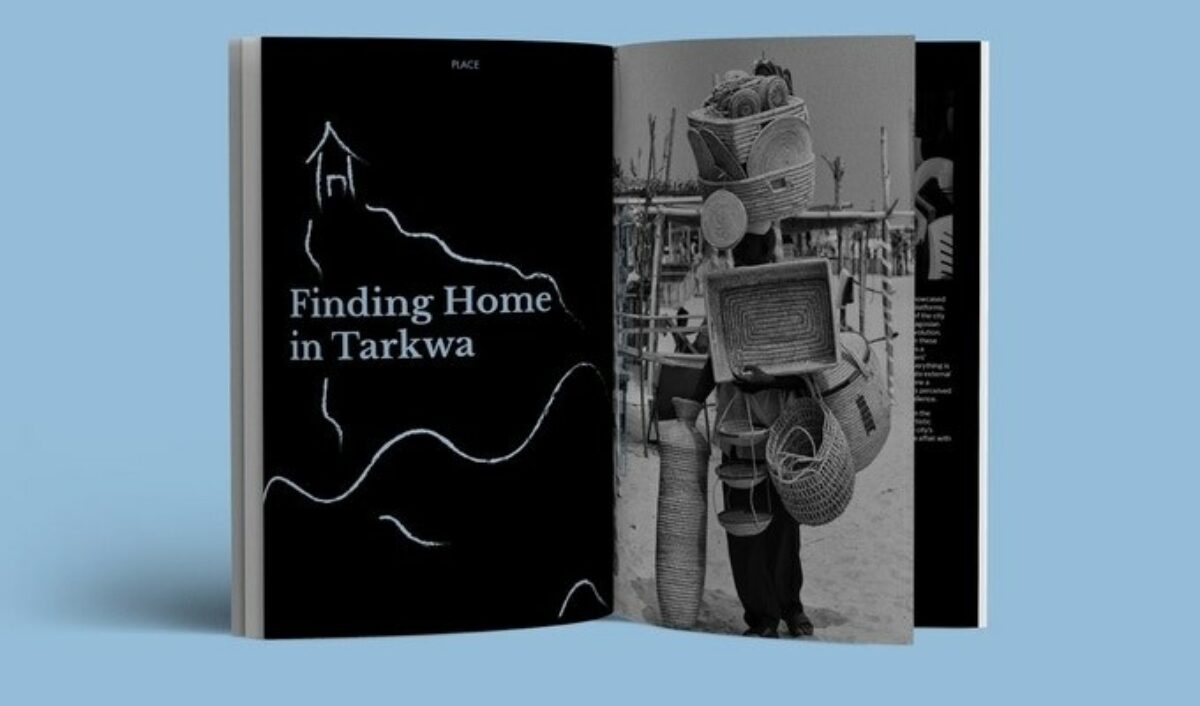
Lagos-based Irin Journal
On overcoming the many practical hurdles, Winnie Rioba , a travel blogger from Kenya regularly posts updates on which African countries offer visas on arrival for Kenyan passport holders and Funmi Oyatogun , a travel blogger and founder of travel start-up TVP Adventures, created a color-coded map to show Nigerians which countries are easiest to enter.
To address price disparities, some African writers are exploring lower-cost ways of travelling within the continent. Hannah Ajala , a freelance journalist, spent six months travelling in West Africa and published detailed costings from her trip. Kenyan travel blogger Bonita Alouch used buses to travel from Kenya to Namibia via Tanzania and Zambia for a total cost of $200, less than a single air ticket, and Omotoke Fatoki , a travel blogger from Nigeria, visited all 36 states in her country by road.
And now that covid has put Africa’s international tourism industry on indefinite pause the pace of change may pick up further. Some tourism authorities, notably South African Tourism and Kenya Tourism, have been running campaigns to reach their domestic audience. But there is still some way to go. Unlike travel bloggers in Europe or the US who can earn a living from their online trade, their African counterparts find it much harder. Dorothy Walker says, “the biggest challenge I face as a Zambian travel blogger is getting paid collaborations; we still fight for people locally to see how we can add value.”
It's hard to predict what will happen from here. Will the steep discounts and drive for domestic tourism continue, or will prices rebound for the international market whenever it recovers? Personally I'd like to see African passport holders exploring more of our own countries and cities to change the industry and perceptions from the bottom-up. As of September, Rwanda and Ghana have re-opened their borders for air travel, with countries like Nigeria and Kenya set to follow suit. The rest of the world will open eventually and we’ll be ready to travel when it is.
About the author
Mazuba is a freelance writer from Zambia whose travel writing has appeared on CNN Travel, Unearth Women, Culture Trip and several in-flight magazines. Her travel podcast Mwende Bwino (Go Well) was recently featured on Conde Nast Traveler’s website and listed as one of the top five Zambian podcasts. Mazuba co-wrote the Lusaka Arts and Culture guide produced by the National Arts Council of Zambia.
Also on The Journal
Alternatives to the annapurna circuit trek, avoiding crowds and roads in the annapurna region.
Pagan Britain: The UK's Ancient Sacred Sites
Mythical sites for a solstice pilgrimage.
Lucie Grace
Slow scotland by campervan, enjoying a covid-era holiday closer to home.
Steven Hunt
Paradise lost, how overtourism both consumes and nourishes malta's fragile economy.
Daiva Repeckaite
Inside armenia's shipping container cities, the lost survivors of the gyumri earthquake.
Joel Balsam
Stephanie Foden
Why horizon guides.

Impartial travel guides
Our guides are written by the leading experts in their destinations. We never take payment for positive coverage so you can count on us for impartial travel advice.

Expert itineraries
Suggested itineraries and routes to help you scratch beneath the surface, avoid the tourist traps, and plan an authentic, responsible and enjoyable journey.

Specialist advice
Get friendly, expert travel advice and custom itineraries from some of the world's best tour operators, with no spam, pressure or commitment to book.
Our guides are 100% impartial and are written by independent, professional travel journalists. We make money by charging carefully-screened travel companies to list their business on our website. Our advertisers have no influence on our editorial content and we never accept payment for positive coverage.
Read more about how we work and what we believe in here .
- Travel guides
- Work with us
Sitemap , Privacy Copyright © 2024 Horizon Guides
South Africa’s top 6 travel bloggers
South Africa has a fast-growing travel blogging community, with inspiring blogs dedicated to everything from camping and long overland adventures to music festivals and weekends away being posted every day.
We’ve picked six of our favourite South African travel bloggers who cover both travel in South Africa and around the rest of Africa, and constantly inspire us to get out there and explore!
Meruschka Govender – Mzansi Girl
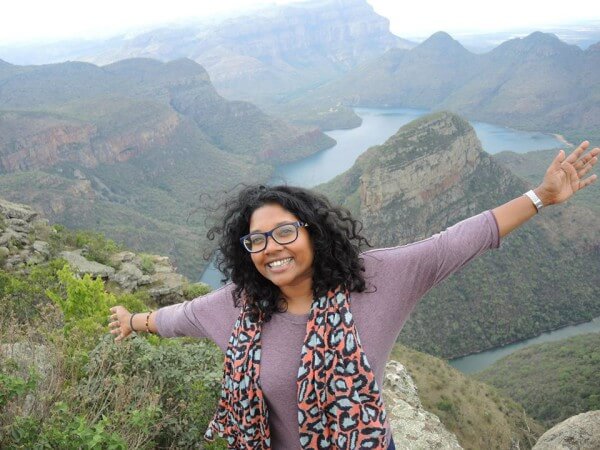
Meruschka Govender is a Joburg-based African travel activist and blogger whose passion is encouraging people to explore Africa, a place of thousands of different languages, cultures and customs. She’s been working in tourism for almost 10 years, and started her blog to show people how much diversity Africa has to offer in terms of amazing travel experiences, many of which you can read about on her fun and adventure-filled blog, from attending music festivals to road tripping South Africa.
Her favourite backpackers in Africa is Bulungula Lodge on the Wild Coast: “It’s just so peaceful out there – no cellphone signal or Internet – just green hills, huts, cows, dolphins and the crashing wild waves. The lodge is a case study in how to do sustainable tourism right: most of the money you spend stays in the community.”
Dawn Jorgensen – The Incidental Tourist

After selling her bespoke tour operating company, Dawn Jorgensen started to miss travel and realised that she had too many amazing experiences not to share them with the world. She started her blog, the Incidental Tourist, to keep travel alive for her. Her blog is personal and engaging – you really get a sense of the person behind the journeys to places such Madagascar and Benin.
Dawn says she’s “very much a child of Africa, never happier than with dust under my feet and the pace of a vibrant African city for company.” She loves “Africa’s diversity, bright colours and intense smells, the people and their rich traditions, the vulnerability of the land, open plains and magnificent wildlife.” Her top African bucket list adventures include tracking mountain gorillas in Rwanda, doing an overland safari by motorbike in Uganda and exploring coastal Mozambique.
Anton Crone – Bright Continent
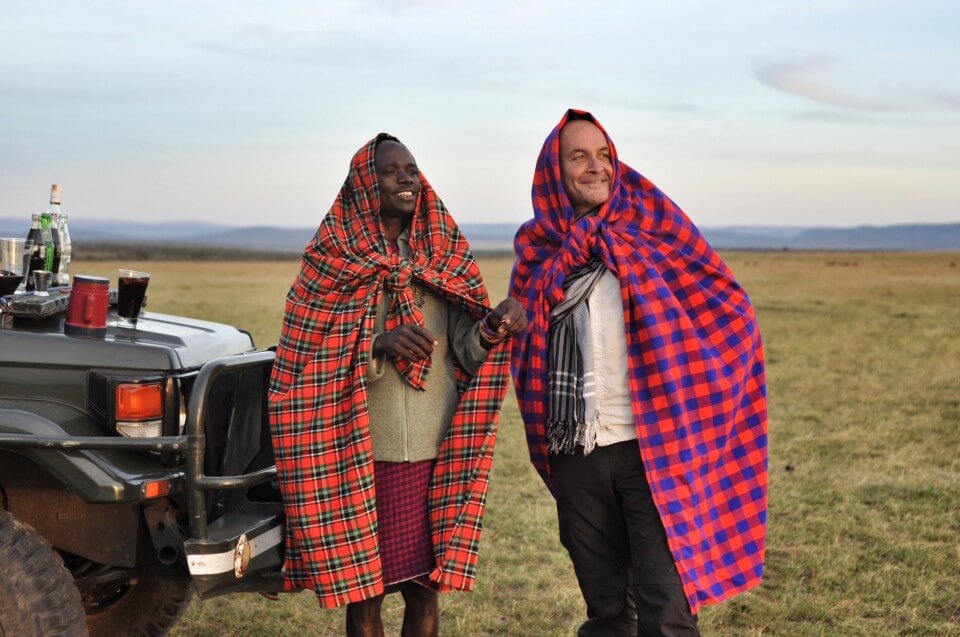
A few years ago Anton Crone decided to give up a career in the advertising industry to become a travel writer and hasn’t looked back. Since then he’s travelled extensively around Africa overland and shares his travels and amazing photography on his wonderful blog, Bright Continent. He decided to start blogging to change people’s perceptions of Africa and to encourage people to travel more of Africa.
Anton says “it’s more challenging to travel in Africa but that makes it more rewarding.” A big advocate for overland travel, he says “flying takes you to dots on a map. You don’t see or experience what’s on the periphery. Travelling overland means you connect the dots and the culture, landscape and your own attitude evolves as you travel further. His greatest African adventure to date was travelling from Cape Town to Ngorongoro Crater in Tanzania and back with a friend in a tiny smart car.
Roxanne Reid
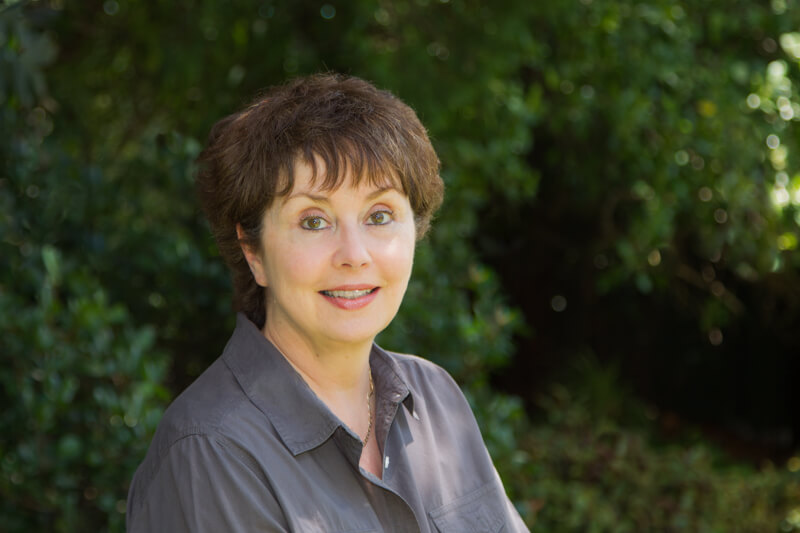
She’s “happiest in the middle of nowhere, meeting the locals, trying something new, or simply watching the grass grow, while her favourite place in Africa is the Kalahari, for “its animals, scenery, thunderstorms, red dunes, starry skies and people”.
Ishay Govender-Ypma – Food and the Fabulous
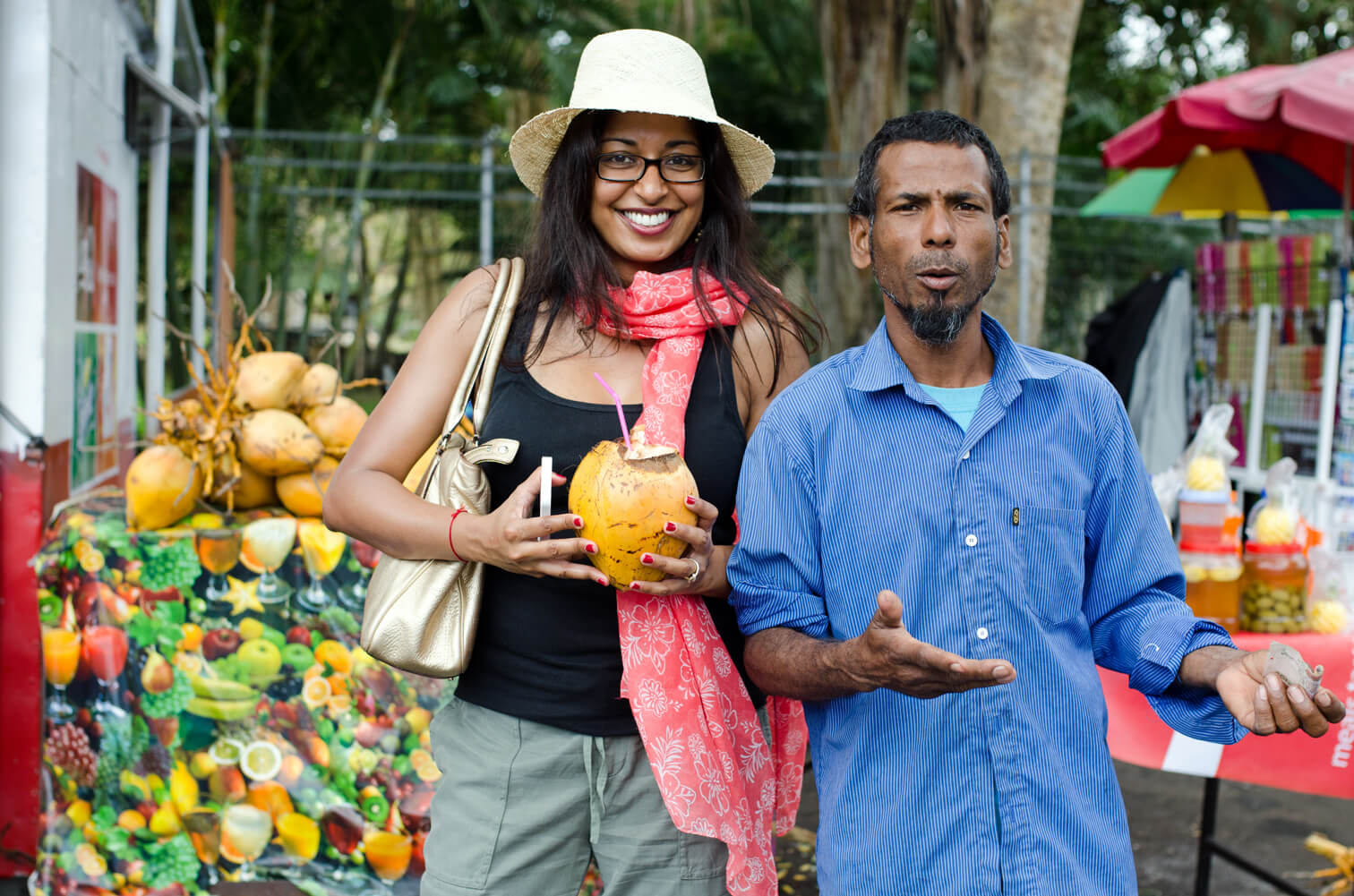
Food and travel writer and blogger Ishay Govender-Ypma has the tastiest blog on this list – Food and the Fabulous – which is filled with her delicious recipes and stories of her foodie travels around South Africa, Africa and the rest of the world. Her top foodie spots in Africa are South Africa, for “the incredibly diversity of cuisine and experience” and Morocco, where “the Middle East meets Africa in a fragrant medley of spices, slow-cooked dishes and pastries.
Scott Ramsay – Year in the Wild
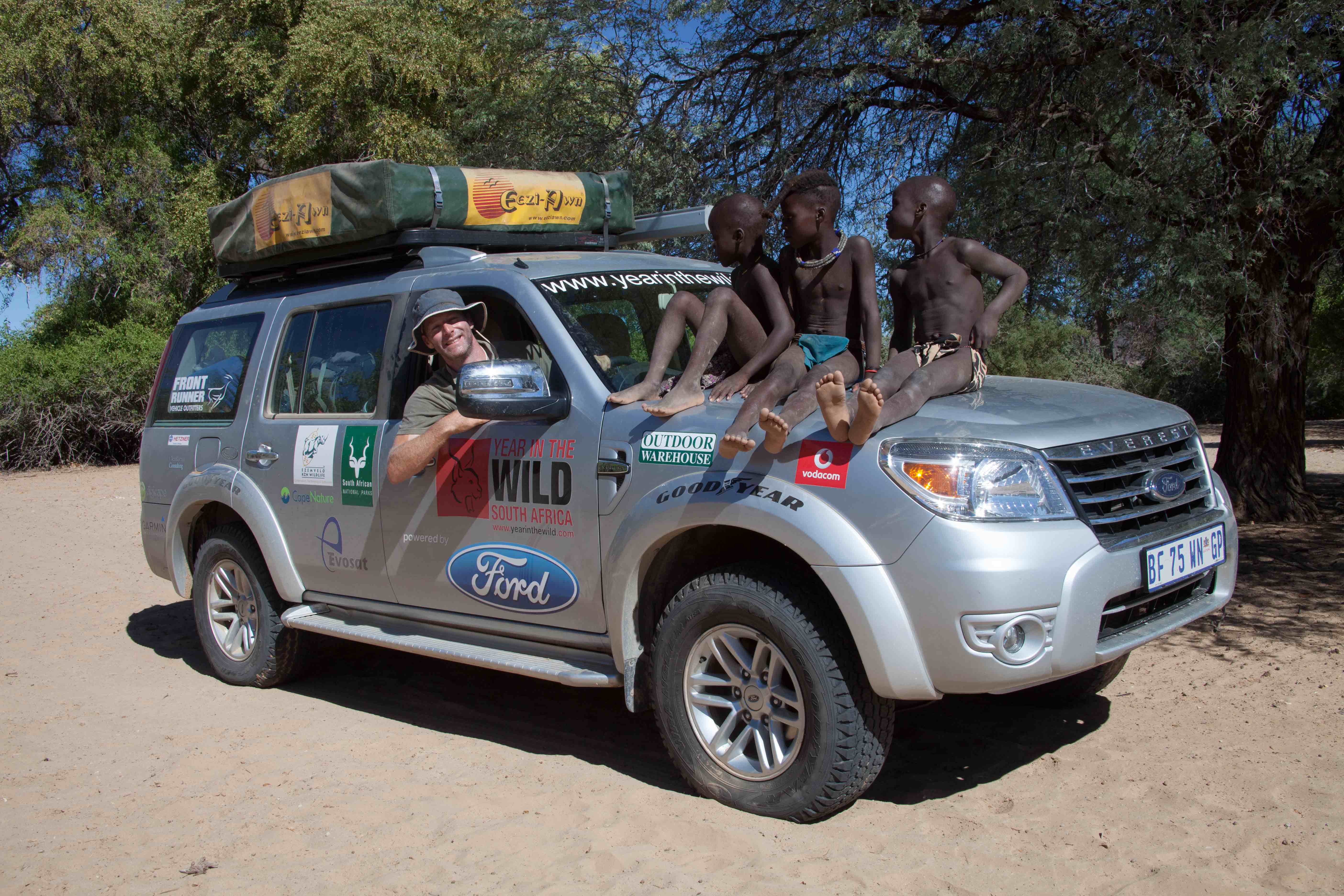
Writer and photographer Scott Ramsay felt too far away from the bush working in an office in Joburg, so he quit his job to travel the wilds of southern Africa instead. He’s now spent over two years on the road, visiting more than 50 parks and reserves in South Africa, Mozambique, Namibia, Zimbabwe and Botswana and sharing his inspiring experiences on his blog, along with his gorgeous photos. He cites the Richtersveld National Park, on the border of southern Namibia, as his favourite wilderness area in South Africa, for the “desert mountains, the booming silence, the blazing stars, the godly aura and the sense of freedom”, while hiking the Imfolozi Wilderness Trail in Hluhluwe-iMfolozi Park in KwaZulu-Natal was one of the wildest things he’s ever done.
About Sarah Duff

- First-hand experience
- Advice and guidance
- We're passionate travelers
Enquire Now
- Hidden Tour Title Hidden
- Hidden Tour Length Hidden
- Hidden Tour URL Hidden
- Hidden Tour Price Hidden
- Hidden Tour Style Hidden
- Hidden Compared Tours Hidden URLs
- Your name * First Last
- Your email address *
- Hidden Alternative Email (deprecated)
- The tour you're intested in
- The tours you're interested in Please do not edit these tour names so we can assist you with your choices.
Please enter your number below.
- When would you like to travel? Apr 2024 May 2024 Jun 2024 July 2024 Aug 2024 Sep 2024 Oct 2024 Nov 2024 Dec 2024 Jan 2025 Feb 2025 Mar 2025 Apr 2025 May 2025 May 2025 Jun 2025 Jul 2025 Aug 2025 Sep 2025 Oct 2025 Nov 2025 Dec 2025
- 26 - 40 Days
- 15 - 25 Days
- 8 - 14 Days
- How many travelers? * Select... 1 2 3 4 5 6 7 8 9 10
- 12 - 17 years
- 18 - 39 years
- 0 - 11 years
- 0 - 7 years
- 8 - 9 years
- 10 - 11 years
- South Africa
- What travel style in Africa would you prefer? * Not Sure Accommodated Tour Camping Adventure Small Group Safari
- Your question or query Feel free to ask us anything! We can advise on breathtaking scenery, colourful cultures, local cuisine and of course, amazing wildlife!
- By submitting your enquiry you agree to our terms of service .
- Email This field is for validation purposes and should be left unchanged.
FEATURED POSTS
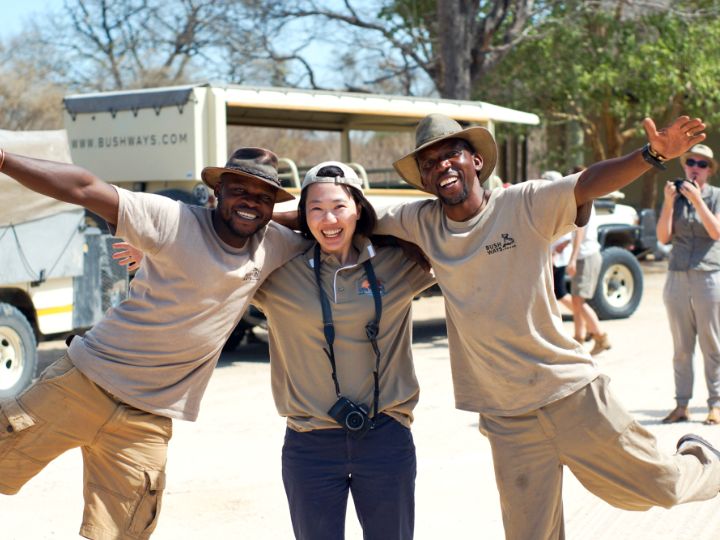
What are the Pros and Cons of Group Travel vs Independent Travel in Africa?
Group Travel vs Independent Travel: A Comparative Insight Embarking on an African adventure presents a crucial decision: should you explore the continent in a group setting or venture solo for an...
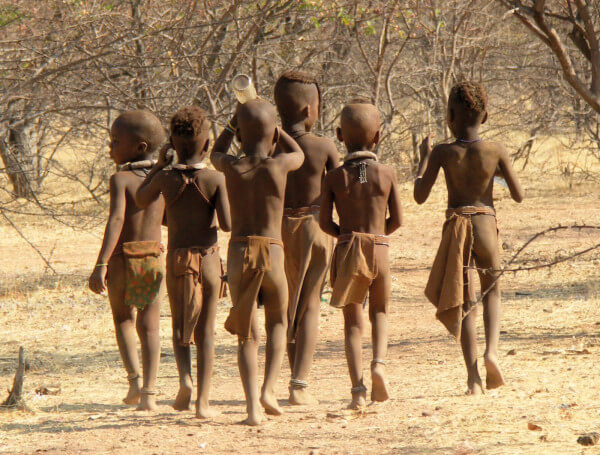
The San Bushmen
The San Bushmen were traditionally hunter-gatherers obtaining there food from wild plants and animals. These days, however, this tradition has mostly been replaced with farming or pastoralist...
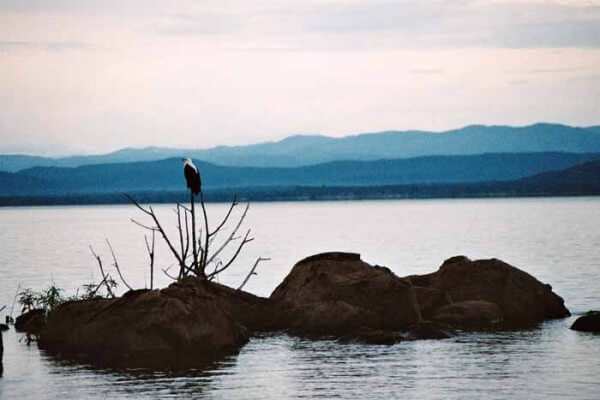
The African Fish Eagle
Embarking on a safari adventure in Africa offers a kaleidoscope of wildlife experiences, but few are as awe-inspiring as witnessing the African Fish Eagle in its natural habitat. Known for its...
Blog categories
- Accommodation
- Adventure Activities
- Africa Blog
- Destinations
- Only in Africa
- Travel Articles
- Victoria Falls
- Videos showing life on the road
I am searching for South Africa topic on the internet, and I found your blog. This is really helpfull. Thanks for helping me to write this article. It’s about “When Is The Best Time To Visit South Africa “ . Kindly check and share your thoughts.
Thanks Ruma
Good travel blog with a lot of information, Keep up the good work
Submit a Comment Cancel reply
Your email address will not be published. Required fields are marked *
Submit Comment
Previous Article
Next article.
- Majors & Minors
- School of the Arts
- School of Humanities
- School of Natural and Social Sciences
- Sigmund Weis School of Business
- Summer Session
- Winter Session
- Graduate Outcomes
- GO Study Abroad
- Research Experience
- Honors Program
- Summer Pre-College Programs
- Academic Calendar
- Registrar and Student Records
- Course Catalog
- Center for Academic Success
- Career Development Center
- Blough-Weis Library
- Admission Events
- Important Dates
- Log In To Deposit
- Admission Representatives by Region
- International
- Tuition and Financial Aid
- Net Price Calculator
- Request Information
- Watch The College Tour
- Virtual Tour
- For Admitted Students
- For Enrolling Students
- River Hawk Portal
- Our Campus and Location
- Living on Campus
- Student Activities & Programs
- Burke Hawk Hub
- Arts & Events on Campus
- Athletics and Recreation
- Access, Equity & Belonging
- Bias Response
- Social Media
- Student & Campus Services
- Campus Safety
- Student Safety
- Healthy Hawks
- Student Health Center
- Counseling & Psychological Services
- First-Year Experience
- Our Leadership
- History and Traditions
- In the Community
- Lectureships and Speaker Series
- Sustainability
- Currents Magazine
- Events Calendar
- Policies, Disclosures and Consumer Information
- Ways to Give
- Planned Giving
- Become a SU Champion
- <a href="/live/image/gid/6/width/650/9262_travel-write-south-africa-carousel.jpg" class="lw_preview_image lw_disable_preview" tabindex="-1"><picture class="lw_image lw_image9262"> <source type="image/webp" media="(max-width: 500px)" srcset="/live/image/gid/6/width/500/height/215/crop/1/9262_travel-write-south-africa-carousel.rev.1630520683.webp 1x, /live/image/scale/2x/gid/6/width/500/height/215/crop/1/9262_travel-write-south-africa-carousel.rev.1630520683.webp 2x"/> <source type="image/webp" media="(max-width: 800px)" srcset="/live/image/gid/6/width/800/height/343/crop/1/9262_travel-write-south-africa-carousel.rev.1630520683.webp 1x"/> <source type="image/webp" media="(min-width: 801px)" srcset="/live/image/gid/6/width/1200/height/515/crop/1/9262_travel-write-south-africa-carousel.rev.1630520683.webp 1x"/> <source type="image/jpeg" media="(max-width: 500px)" srcset="/live/image/gid/6/width/500/height/215/crop/1/9262_travel-write-south-africa-carousel.rev.1630520683.jpg 1x, /live/image/scale/2x/gid/6/width/500/height/215/crop/1/9262_travel-write-south-africa-carousel.rev.1630520683.jpg 2x"/> <source type="image/jpeg" media="(max-width: 800px)" srcset="/live/image/gid/6/width/800/height/343/crop/1/9262_travel-write-south-africa-carousel.rev.1630520683.jpg 1x"/> <source type="image/jpeg" media="(min-width: 801px)" srcset="/live/image/gid/6/width/1200/height/515/crop/1/9262_travel-write-south-africa-carousel.rev.1630520683.jpg 1x"/> <img src="/live/image/gid/6/width/1200/height/515/crop/1/9262_travel-write-south-africa-carousel.rev.1630520683.jpg" alt="south african travel writer" width="1200" height="515" data-max-w="1200" data-max-h="515"/> </picture> </a>
- Travel Writing in South Africa
Explore South Africa from a Writer’s Perspective on this exciting study abroad trip
- A Window To Japan
- Arts of Italy
- British Law, Commerce, and Culture
- Filming Prague
- Focus Australia
- GO Barcelona
- GO New Orleans
- GO New Zealand
- GO Southern France
- Greek Culture
- Life is Good in Chile
- Peace, Youth and Reconciliation in Northern Ireland
- Philippines: Learning, Understanding and Service
- Service and Culture in Puerto Rico
- GO Your Way
- Paying for GO Programs
- GO Programs Policies & Procedures
- GO Resources for Parents, Families & Supporters
- GO Application Portal
Experience a rich blend of cultures, compelling history, breathtaking scenery and collection of wildlife not found anywhere else.
Explore South Africa from a writer’s perspective on this exciting study abroad program led by Associate Professor of English and Creative Writing Glen Retief, who will share his memories of growing up in South Africa.
You’ll spend a week in a traditional Xhosa coastal village at Bulungula, where you’ll meet with traditional diviners and chiefs, herd sheep and cattle, and make friends with local families.
Visit Cape Town to tour a black South African township, bargain at an African handicrafts market, visit museums, meet penguins and enjoy dishes such as lamb and tomato curries and pancakes stuffed with fresh mangoes.
You’ll also:
- Tour the castle where Dutch colonists first settled
- See lions, elephants, giraffe, kudu and more
- Take in breath-taking rainforests, mountains, beaches and oceanside cliffs
And through it all, you’ll have time set aside for journaling so you can take these experiences and turn them into travel essays when you return.
Get More Information

Global Programs
514 University Ave. Selinsgrove, Pa. 17870
514 University Ave., first floor
Phone & Email
570-372-4697 [email protected]
- Craft and Criticism
- Fiction and Poetry
- News and Culture
- Lit Hub Radio
- Reading Lists

- Literary Criticism
- Craft and Advice
- In Conversation
- On Translation
- Short Story
- From the Novel
- Bookstores and Libraries
- Film and TV
- Art and Photography
- Freeman’s
- The Virtual Book Channel
- Behind the Mic
- Beyond the Page
- The Cosmic Library
- The Critic and Her Publics
- Emergence Magazine
- Fiction/Non/Fiction
- First Draft: A Dialogue on Writing
- Future Fables
- The History of Literature
- I’m a Writer But
- Just the Right Book
- Lit Century
- The Literary Life with Mitchell Kaplan
- New Books Network
- Tor Presents: Voyage Into Genre
- Windham-Campbell Prizes Podcast
- Write-minded
- The Best of the Decade
- Best Reviewed Books
- BookMarks Daily Giveaway
- The Daily Thrill
- CrimeReads Daily Giveaway
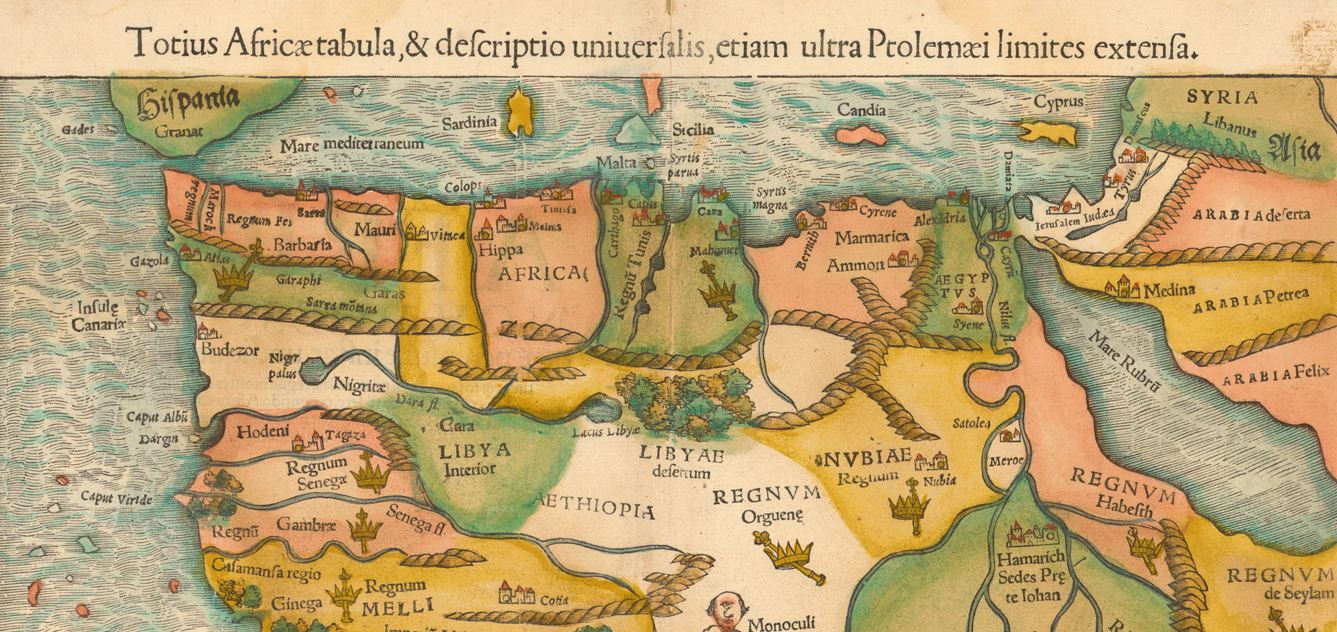
How to Be an African Travel Writer in Africa?
Emmanuel iduma surveys a complicated oeuvre.
It is a question of time’s long reach. In many African countries the main period of colonization occurred between the late 19th and mid 20th centuries. The foundational assumptions about Africans, however, had been made centuries earlier. Say, for instance, in the records of Balthasar Springer, a German merchant who had traveled in 1506 along the Atlantic Coast on a Portuguese ship, around the Cape of Good Hope. Two years later, Hans Burgkmair the Elder—an artist who lived in Augsburg, then the German center of imperial politics—set out to illustrate those travels on six woodcuts. One resulting drawing by Burgkmair is, as described in the British Museum , of a “standing black youth dressed in a feather skirt, cape, and head-dress and holding a club and shield.” “Let us imagine,” writes V. Y. Mudimbe regarding Burgkmair’s drawings in The Invention of Africa , “the painter at work.” Mudimbe continues:
He has just read Springer’s description of his voyage, and, possibly on the basis of some sketches, he is trying to create an image of blacks in “Gennea.” Perhaps he has decided to use a model, presumably white but strongly built. The painter is staring at the pale body, imagining schemes to transform it into a black entity. The model has become a mirror through which the painter evaluates how the norms of similitude and his own creativity would impart both a human identity and a racial difference to his canvas.
This assumption—that by projecting blackness against whiteness you can define it—became not just foundational, but functional, a matter of form (colonialism is from Latin colere , meaning to cultivate or to design). As the explorers and merchants began to return with stories from terra incognita , their empires had a basis with which to pursue their work of imposing colonies. Once the hinterlands could be accessed, anthropologists sought scientific methods to classify the now indistinct Other. Perhaps this delineation is sweeping, yet it helps me begin: What are the broad historical strokes with which to account for travel writing in Africa? What is the shape the genre takes, whether in the writing of Europeans or in those by Africans themselves? How do I pay homage to a tainted genre, making a cursory, even if informed literary chart?
I begin in 1904, during the golden age of colonialism. The text of a book by Isabelle Eberhardt—which she referred to as her “Sud-Oranais stories,” titled Dans l’ombre chaude de l’Islam by her friend and executor—is discovered in an urn after her tragic death. The stories are of her Saharan adventures, from May 1904 onwards, when she leaves Ain Sefra, Algeria, “so much the little capital of the Oranian desert, solitary in its sandy valley, between the monotonous immensity of the high plateaux and the southern furnace.” The sense of a journey inwards is clear from the outset, and elicits deep feeling. She is less attracted to the idyllic Algerian desert or inclined to denote how her life differs from the Muslims she encounters. Hers is an introspective journey: “For me it seems that by advancing into unknown territories, I enter into my life.”
Her romantic notions are obvious in In the Shadow of Islam , but she had previously covered self-exploratory ground. Her mother, with whom she converted to Islam in 1897, had eloped to Switzerland with Alexander Trophimowsky, a former Russian Orthodox priest turned anarchist. Daughter and mother later moved to Tunis. Such remarkable, dramatic turns characterized her life—and, it seems, produced in her ambivalence about permanence, or home. “Once more astounded by all the that has captured me and all I have left, I tell myself that love is a worry and that what’s necessary is to love to leave— persons and things being loveliest when left behind,” she wrote.
Yet self-exploration, such as Eberhardt’s, occurs within a given place, at a given time. The quietude of a place, a journey that stretches unencumbered, the road that beckons: she couldn’t afford this in middle-class, cosmopolitan Geneva. What is it about the Algerian desert that makes the European imagination leap in wonder and rapture, in expectation for a near-religious experience, however genuine and therapeutic those sentiments? I look for clues in Michel Leiris’s Phantom Africa , a 700-page book first published in 1930, and reissued in a 2017 translation by Brent Hayes Edwards.
Leiris’s approach, as he writes in a foreword to the 1981 edition, “was not to conform to the picturesque standards of the classic travel narrative, but instead to scrupulously keep a travel notebook.” He’d earlier described the book as a diary. Leiris had been part of “Mission Ethnographique et Linguistique Dakar–Djibouti,” a momentous ethnographic project between May 1931 and February 1933, whose main task was to gather African art and artifacts for the collections of the Muséum National d’Histoire naturelle and the Musée d’ethnographie du Trocadéro in Paris. Their trajectory encompassed most of the European colonies—along today’s Senegal, Mali, Burkina Faso, Benin, Niger, Cameroon, Central African Republic, Congo, Nigeria, Egypt, Sudan, Djibouti, as well as independent Ethiopia.
Leiris, barely 30 at the time, ventured afield with certain illusions—he hoped for self-transformation, and was ready to take in “exotic impressions,” as he wrote to his wife Zethe. He had no training as an anthropologist, although he would return to author a number of ethnographic studies. He was a writer disenchanted with Parisian literary circles, and a young man who, before the trip, was so plagued by anxiety and depression he had to consult a psychoanalyst. Hence, like Eberhardt’s, his was an exploratory trip in which he hoped to bring his inner self into focus. Yet, on February 15, 1932, after several months of journeying, he wrote: “The voyage only alters us for brief moments. Most of the time you remain sadly the same as you’ve always been.”
In his introduction, Brent Hayes Edwards suggests that the book can be read as a “painfully drawn-out and fitful chronicle of disillusionment.” From what illusion does Leiris recover? He achieves a remarkable fit of regimen, recording, day after day, his shifting emotional states on a journey that brought him in direct contact with the absurdity of the Mission Dakar-Djibouti—which, while claiming to see something of value in the artifacts that were collected, treated the cultures that produced them as inferior, unworthy of preserving their art. He became, in his own words, “disappointed by ethnography.” It was tedious, bureaucratic work. Only later, after a few decades, would he take an anticolonial stance, calling on fellow ethnographers to defend the aspirations of the societies they studied. On that trip however, writes Edwards, he produced, “an onrushing current of undigested everyday effluvia, rather than a reflection on the significance of the voyage, carefully crafted from the privileged vantage of hindsight.”
There are those, then, who write about their travels to Africa from the vantage of hindsight. Few years before his death, Ryszard Kapuściński described his life-work as “literary reportage” in a collection of lectures titled The Other, his final book . It can be read as the culmination of years of confronting people who do not look like him: In one lecture, delivered in Graz, while attempting to identify the features of “my Other,” he begins with skin color: “How often in Uganda I was touched by children who went on looking at their fingers for a long time to see if they had gone white!”
Kapuściński had first traveled to the continent in 1957, to Ghana, just as it became independent. He was a Polish journalist reporting for a state-owned newspaper. Unlike Leiris he didn’t seem to begrudge the tedium of his job. In fact, he was known, as noted by The Washington Post in a review of The Shadow of the Sun , his collected writing on Africa, to veer “into abrupt flights of lyricism on unexpected subjects.” His enquiry into Africa isn’t a travelogue per se, only the account of someone who traveled extensively within it. But he is a starting point for my enquiry into Paul Theroux, another acclaimed writer who wrote about Africa.
Theroux’s two books of travel writing include “safari” in their titles: Dark Star Safari: Overland from Cairo to Cape Town and The Last Train to Zona Verde: My Ultimate African Safari . Admittedly, the word comes from root safar , Swahili by way of Arabic, meaning “journey.” Yet I am curious about Theroux’s reiterated use, given the unresolved ethical problems posed by safaris, which today commonly refers to expeditions in the East African wild.
Consider these passages:
And finally, the most important discovery—the people. The locals. How they fit this landscape, this light, these smells. How they are one with them. How man and environment are bound in an indissoluble, complementary, and harmonious whole. I am struck by how firmly each race is grounded in the terrain in which it lives, in its climate.
Happy again, back in Africa, the kingdom of light, I was stamping out a new path, on foot in this ancient landscape… I was ducking among thornbushes with slender, golden-skinned people who were the earth’s oldest folk, boasting a traceable lineage to the dark backward and abysm of time in the Upper Pleistocene…
The first passage is from Kapuściński’s The Shadow of the Sun , and the second from Theroux’s The Last Train to Zona Verde , both in the first chapters. These are trips in which the landscape is ancient, a new path is stamped out, and in which the protagonist encounters people grounded in the past. Hence the perennial problem is posed afresh: why is Africa always in need of discovery? And suppose it is true, that the earth’s oldest folk need reminding of their pre-historic claim to the earth, whose right is it, and who has the credentials to write that story?
I approach those questions—especially since I admire Kapuściński’s “flights of lyricism”—cautious of their complexity. I do not believe that only Africans should write stories about life in Africa, just as it is facetious to imagine Europe written about only by Europeans. The argument can devolve at once into a slippery slope. It seems to me that those who do not claim an African country as their place of origin enrich African writing, but only as far as they do not assume that a distance in worldview can be bridged by a single, or series of visits.
In this regard I acknowledge Anna Badkhen, an American writer. Hers is a multi-hyphenate genre: immersive-investigative-literary-journalism-as-travel-writing. After each of her journeys she returns with deeply involved, self-effacing narratives of permeable boundaries—between land and sea, humans and cattle, myth and truth, storyteller and story. In Fisherman’s Blues: A West African Community at Sea, she writes of fishing people who live south of Dakar, detailing their travails, deaths, and broken pirogues, as they face the dilemma of making a living like their ancestors, while confronted by the reality of a sea in ecological distress. In Walking with Abel: Journeys with the Nomads of the African Savannah , she accompanies the largest surviving group of nomads on the planet during their annual migration across the West African Sahel. Her books teach travel writing as a meditation on the borderline.
As an African writer, I contend with an idea that seems incontrovertible: my writing exists in the wake of derogatory narratives, therefore postcolonial. The damage has been done. Travel writing, by a Nigerian who travels in parts of Africa, is therefore a means of repair, a way to participate in a genre that historically speaks for—rather than with, or even to—me. While writing A Stranger’s Pose , my book of travel stories, I was attempting to situate it within a broad, mongrel genre. If a book by an African author conveyed the sense of a journey, or if travel across the continent informed the writing of a book, I included it in my portfolio of influences.
One literary forebear is Amos Tutuola. Consider My Life in the Bush of Ghosts , his second novel to be published, a lodestar in his constellation of tales about humans in a supernatural world. As a kind of travelogue, the book’s episodes are bookended by departure and return. I recognize its themes as those associated with the experience of travel—a distinct sense of home, an awareness of being estranged, the peculiarity of encounters with strangers, and upon return, a feeling of nostalgia for the foreign land visited. Put squarely, to read the book is to encounter yourself as a stranger. In one sense you are a stranger who relates to the disoriented feeling of the protagonist, a human among non-humans. In another sense, you are the unnamed protagonist, traveling through a foreign land, constantly at the verge of despair. The episodes are the dazzling flashpoints of years that elude enumeration. Indeed the novel is not entirely without chronology—in the Bush of Ghosts the protagonist becomes old enough to get married and have a son—but since he entered “unnoticed,” too young to know that “it was a dreadful bush or it was banned to be entered into by any earthly person,” his travails take on the character of those of a wanderer who, to survive, must surrender to the unpredictable vagaries of the journey.
Tutuola’s metaphysical world, rendered in bastardized English prose, turns me to The Sahara Testaments , in which the encounters are as acute and revelatory . It’s a magisterial collection of poems by Tade Ipadeola, his reflection on the Sahara Desert and its outlying countries in hundreds of quatrains—
…I did not ask her name, I wouldn’t pit
My halting French against her effortless river Of Bambara and market French. I forget What the fish tasted like but not the fever Of curiosity, flaring as it did from a nugget
Of ivory that blinded my wandering eyes…
Yvonne Owuor is as evocative when writing about Lingala. She’s one of 14 writers who participated in The Pilgrimages Project , sent to one of 13 cities in Africa, and one in Brazil. Co-organized by Chimurenga magazine, the 2010 World Cup was a backdrop against which the writers were to produce travel narratives, and tales about their host cities. Owuor is a Kenyan in Kinshasa whose writing reads like an attempt to stay within a gap, one between resident and visitor. She is writing, as her title states, “In the Clear Light of Song and Silence.” More importantly, hers is a model exercise in emotional acuity while observing as a stranger: “The thing about Lingala is the inner knowing that pops up on first encounter—that this too comes from a deep, deep song, comes from the time when words had not broken off from music and perhaps the same time when humankind had not been infected by pain. It rouses new and old feelings with names yet unknown, certainly. Its chords vibrate and find resonance with something within, and I know, if I were of this place, in order to channel the sensations I too would need to sing or dance or cry.”
Though less lyrical, Zukiswa Wanner’s Hardly Working: A Travel Memoir of Sorts is also an account of a trans-African journeying, from Kenya via South Africa to Uganda, with her partner and son. She was born to a South African father and a Zimbabwean mother two weeks after 1976 Soweto Uprising, and nicknamed “Soweto” by the nurses. In her prologue she writes of her difficulties in obtaining a visa to Britain, just as her partner, a Kenyan man, had been attended with trouble while applying for a South African visa. She is decidedly pan-African: “I do not believe that I should have to deal with a lengthier process to visit a non-African country, when I do not nearly care as much to be there as I do to be in African countries.” This declaration, and by extension her multi-country road trip, is an unequivocal indication of the narrative landscape being mapped by African writers. The gaze is inwards, and continental.
Yet it is not a sweeping gaze—an attempt, however tenuous, to find what’s familiar in the diverse and unrelatable. In Looking for Transwonderland: Travels in Nigeria , Noo Saro-Wiwa writes of estrangement: “I had arrived in a country I had never lived in, and a city I’d visited only briefly twice before, among a thoroughly foreign-sounding people. It was the most alienating of homecomings. I might as well have arrived in the Congo.” Even then, she was doubly estranged: a dictator had murdered her father, the writer Ken Saro-Wiwa, and the country was “an unpiloted juggernaut of pain… a repository for…f ears and disappointments.” Part-returnee, part-tourist, with the innocence of an outsider, as she designates herself, she traveled in a country to which she couldn’t lay total claim, but which she was inclined to write about. At the end of her journey she was prepared, she writes, “to embrace the irritations with tentative arms, and invest some of myself.”
Two years before Saro-Wiwa’s travel account was published, Pelu Awofeso, a Nigerian journalist, had documented his own travels in Tour of Duty: Journeys Around Nigeria , writing with enthusiasm and patriotic flair. He was surprised to see, once while attending a Durbar Festival, merry tourists attracted to the spectacle. “Could this be happening in the same Nigeria often labelled as a no-go area?” He wanted to “push Nigeria some notches up the perception ladder of the world.” Written in tour-guide lingo, Awofeso’s adulatory prose seems intended to affirm a country as his, seeing something else besides the blights of successive years of maladministration.
These reflections on travels by Saro-Wiwa and Awofeso in their homeland are aptly postcolonial, a way to transcend and go beyond the legacies of colonialism. They could be read as a process, in the first place, of discovering the scope of the colonial effort, in which otherwise unrelated people were forcefully amalgamated. Nigeria’s Nobel Laureate Wole Soyinka had undertaken a similar trans-national trip around 1960, the year of Nigeria’s Independence. He traveled around the country in a Land Rover, with a tape-recorder and a camera, sponsored by the Rockefeller Foundation, who expected him to write a book on drama. The book was never written, but the experience, one could argue, informed his 1965 play The Road . “Breathe like the road. Be the road,” a character says at the end. “Spread a broad sheet for death with the length and the time of the sun between you until the one face multiplies…”
Journeys are so, a multiplication of faces, a means of relating to a wider world. Such as in Teju Cole’s Blind Spot, a book in which the Nigerian-American author pairs photographs and texts to reveal an atlas of a borderless world—Brazzaville, Brooklyn, Baalbek, Beirut, Fort Worth, Rivaz… “Why do I feel like I have seen him before?” He writes of a photograph in which a man’s back is to the viewer. “Marker says remembering is not the opposite of forgetting but rather its lining. Imagine, for a moment, that every face you cannot see is your own face, but years later. The future is lined with your future face.” Chris Marker himself, in his 1986 essay film Sans Soleil , had spoken of his time in Guinea Bissau: “It was in the marketplaces of Bissau and Cape Verde that I could stare at them again with equality: I see her, she saw me, she knows that I see her, she drops me her glance, but just at an angle where it is still possible to act as though it was not addressed to me…”
A Stranger’s Pose is framed by glances, addressed to those who do not see me, and to others I do not see. At the beginning, I watch from a car window as men walk to their houses, and at the end, I imagine a stranger glancing at the grave of a close relative, preserving her memory in the process. The journey ends. But images and gestures, remembered or imagined, return in great detail.
Emmanuel Iduma’s latest, A Stranger’s Pose , is available from Cassava Republic.
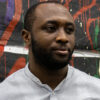
Emmanuel Iduma
Previous article, next article.
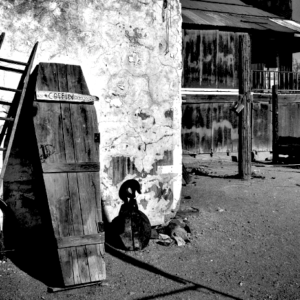
- RSS - Posts
Literary Hub
Created by Grove Atlantic and Electric Literature
Sign Up For Our Newsletters
How to Pitch Lit Hub
Advertisers: Contact Us
Privacy Policy
Support Lit Hub - Become A Member
- International edition
- Australia edition
- Europe edition

'Let's get more travel stories on Africa by Africans'
Louise Linton’s cliche-ridden memoir of her gap year in Africa was met with scorn and anger earlier this month. We asked three writers why travel writing about the continent needs to change – and how
T his month actor Louise Linton caused a social media storm when an extract of her African gap year memoir was published by the Telegraph and was widely panned online for being a tick list of cliches and stereotypes in the way the west has always liked to portray the continent. On Twitter, #LintonLies , set up by Zambian writer Lydia Ngoma, was trending as people started to pour scorn on Linton’s version of certain events and her take on life there. Think: “close encounters with lions”, “brutal tales of rape and murder,” and 12-inch long spiders, which would be terrifying, though they only exist in Laos .
But the problem is broader, deeper and goes back much further than Linton’s book. The dominant narratives about Africa in western writing and media still carry echoes of colonialism, commonly portraying the western visitor as benevolent saviour and denying those who actually live there any agency in the process.
This inevitably feeds into the way travellers perceive the continent and the kinds of trips people choose to go on. Travel to African countries still focuses on luxury safaris, where tourists can play the wealthy explorer, or voluntourism-style “gap yahs” of the kind Linton enjoyed, something parodied well by the Barbie Saviour instagram account , which pokes fun at the uncomfortable trend of young people broadcasting their lightweight philanthropic efforts on social media.
To explore the subject further, we asked three writers and editors to describe what changes they’d like to see in the way travellers and writers approach Africa.
Lydia Ngoma: ‘I would like to see more stories on progress … African wonder-kids making it in mainstream media’

Many books, travel guides and shows about Africa are predominantly created by white, western travellers, and while this is not a bad thing in itself, there are some tropes that we as Africans are tired of seeing.
What we usually see is the country of Africa (!) set against a beautiful backdrop of enchanting natural landscapes, exotic animals and its happy people dying of hunger, disease and/or war. We are shown one side of a rusty, old colonial coin where helpless Africans need saving from themselves in their dark paradise. This is a stereotype, an incomplete story, and the narrative needs changing.
Africa is a continent made up of 54 different countries which all have different, unique people and cultures which need to be individually appreciated, not slapped together as one. If one is going to document Malawi, let it be about Malawi and not about “Africa”, because Malawi alone cannot describe, let alone define the whole continent.
While some travellers positively document African countries’ massive steps in development, there is still a large number that have held onto the Africa-is-dying-only-we-can-save-them trope. Yes, there are still thousands that struggle on a daily basis, but that is not exclusive to Africa, so why are we the only ones portrayed by the trademark kid with the flies around his mouth? I would like to see more stories on progress – breakthroughs in health and education, state-of-the-art infrastructure, African wonder-kids making it in mainstream media. Like Siyanda Mohutsiwa , a young writer from Botswana who started the trending twitter hashtag #ifafricawasabar. It opened up a discussion on important things that affect us such as politics, corruption, prejudices and the like, earning her a spot on a TED Talk . As for travel resources, sites I follow include zurukenya.com , which gives travel advice on Kenya, and akinmade.com which features the works of Lola Akinmade, a Nigerian writer and photographer. Great travel writers include Zambian journalist Humphrey Nkonde, and Pelu Awofeso from Nigeria.
In the same way we made Africa synonymous with death, war and hunger, let us change the narrative and make it more associative with progress and development.
Lastly – and this lies on my fellow Africans – let us get more African-written travel pieces on Africa. Instead of waiting for the western blogger to come and pose with the hunger stricken child, let us write our own stories and show the world the side of Africa which is less seen.
Lydia is a writer from Lusaka, Zambia who started #LintonLies . She blogs at eyewoke.wordpress.com and you can follow her on Twitter @lydiangoma
Samira Sawlani: ‘Writing continues to present a particular experience as the only experience’

There is a running theme among the “I hugged a child during my gap yah in Africa and it transformed me/I taught in a village with only an American accent as a qualification/I fought rebels in the jungle and made it home in time to cook for all the starving African children/Africa and its people gave my life meaning, they’re so happy with so little” memoirs which crop up in mainstream western media from time to time – which is that they are all written by white writers.
While there is no shortage of travel writers from diverse backgrounds, their experiences are rarely seen in the mainstream media. Such stories would provide a more authentic and badly needed alternative to the cliched, often patronising tales by “white saviours” , with their echoes of Kipling and Conrad.
Like Louise Linton’s memoir, such writing reinforces negative stereotypes and continues to present a particular experience as the only experience; that of the white writer from the west.
Yet there is an abundance of travel writing, blogs and travelogues by writers on and from Africa, in the African diaspora and a range of racial backgrounds, just waiting to be discovered. This includes blogs like the Kenyan Camper , Mzansi Girl and work by Nigerian travel writer Pelu Awofeso .
One great example is Looking for Transwonderland: Travels in Nigeria, by Noo Saro-Wiwa , who having grown up in the UK, returned to the place of her birth and wrote a fascinating, funny and poignant book about the five months she spent travelling across the country, an insight into the vibrancy, chaos, cultures, landscape and beauty of Nigeria.
When it comes to the west’s view of Africa, not only is there a need for more diverse voices, it’s time we had more decolonised ones too.
Samira is a journalist and community manager for Media Diversified . Follow her on Twitter @samirasawlani
Elliot Ross: ‘When writers recycle familiar colonial fantasies they’re refusing to engage with what’s actually in front of them’

There are numerous examples of non-African writers and reporters currently doing strong work in Africa for European and American media. From the Anglophone press, the likes of James Copnall , Joe Penney , Jina Moore , Glenna Gordon , Howard French , Hannah McNeish and many others produce good, thoughtful journalism about all kinds of things. As I see it, such journalists tend to share a few basic commitments. Firstly, they speak with large numbers of local people at all levels of society. Secondly, they don’t make themselves the story. Thirdly, they attempt to engage seriously with the historical, political and economic contexts for whatever they’re reporting on – be that an election campaign, a social movement, a civil war, or the rise of a new musical genre.
I think the best travel writing usually sticks by those commitments too. One of the reasons it’s frustrating when writers recycle familiar colonial fantasies is that they’re refusing to engage with what’s actually in front of them, or else can only think about what they find in Africa today by comparison with spurious Eurocentric cliches about the continent. Whether a writer is going clubbing in a heaving mega-city or traversing some faraway mountain paradise, they’ll write best by respecting the place and the people in it.
- Africa holidays
- Travel writing
Most viewed

IMAGES
VIDEO
COMMENTS
Nakhane Toure is a writer and musician, and his debut novel, Piggy Boy's Blues, was published in 2015. Nakhane is also an award-winning musician with two albums out, Brave Confusion and his most recent, The Laughing Son which also came out in 2015. Photo by The Con. I think a big chunk of my novel occurs on the road.
I'm a freelance writer, Lonely Planet author and passionate traveller currently calling Cape Town home. A self-proclaimed South Africa expert, I write on all aspects of Southern African travel. I am also a self-taught beer expert (been practicing for years!) and an authority on South African beer. If your publication needs any features on ...
Jaredincpt.com is home for travel writer, content creator and tour guide Jared - based in Cape Town, South Africa ... South African Travel Journalist. Home; BLOG. All Cape Town Food & Drink International Travel Interviews Lifestyle South Africa Spirituality TV Travel Features. Travel. Your best-yet Mediterranean summer trip. International ...
3. Hardly Working by Zukiswa Wanner. A multi-country African journey with the thrills and spills of public transport is the story of novelist Zukiswa Wanner's Hardly Working: A Travel Memoir of ...
South African journalist Lerato Mogoatlhe set off for three months in west Africa. She ended up drifting across the continent for five years. In 2019 she wrote a book about her travels, called ...
These gifted South African writers demonstrate how travel can become a wellspring of inspiration. By encountering new perspectives, capturing authentic moments, exploring history and culture, finding inspiration in urban landscapes, and connecting with nature's beauty, they have harnessed the power of travel to elevate their writing.
A travel writer for Siyabona Africa, Heather has explored the travel industry in South Africa and the UK over almost 20 years. After a decade of travel consulting, she became Editor of a monthly travel trade publication before a sojourn into motherhood and overseas travel to the UK, New Zealand and Australia. She has worked for a hotel company ...
A huge thank you to Cindy Alfino and author Derryn Campbell for my Absolutely Awesome South Africa prize. As a travel blogger I adore learning new things about our vibrant, exciting country and this book is packed chock-a-block full of interesting insights, facts, stats and beautiful artwork and images. It's a new coffee table favourite (and ...
Justin Fox is a travel writer of long standing (and long journeys) and a novelist. His new book brings those interests together: Place: South African Literary Journeys (Umuzi) is about journeys following the works of great South African writers - trips to and through Olive Schreiner's Eastern Cape, JM Coetzee's Karoo, Zakes Mda's Wild Coast, Deneys Reitz's Boer War journey across the ...
Alma is a South African travel blogger and writer. She hopes to inspire you with facts and fables about her adventures, road trips and international travel. Step by step instructions on how to leave a comment on my blog: Type in your comment in the comment box.
Rated as one of the Top 100 African Travel Experts on Twitter by TravelStart Nigeria; Rated as one of 100 great SA travel Twitter Feeds by TravelStart South Africa My book A Walk in the Park: travels in and around South Africa's national parks was published in 2009 and the updated 2nd edition published as an e-book in 2015.
Richard Holmes is a freelance travel, food and lifestyle writer. Based in Cape Town, South Africa, he is a regular contributor to print, online and in-flight media worldwide. Alongside editorial commissions, Richard also consults to leading brands in the travel and hospitality industries, helping to
Travel, Adventure and Safari. ROAMING FOX WELCOMES YOU TO HER TRAVEL, ADVENTURE AND SAFARI BLOG. Roaming Fox inspires and entertains you with facts and fables about her adventures in local travel in South Africa, Africa as well as international destinations. She has scuba dived through wrecks in the Red Sea, camped in the wild in Africa on road ...
Tim Bewer. Tim is a travel writer who has covered 10 African countries for Lonely Planet's Africa, East Africa and West Africa guidebooks. The 25 safari experts wrote a total of 1,300 expert reviews about the major countries and parks. Most are reputed guidebook authors and travel writers!
Most thrilling South African novel: Thirteen Hours - Deon Meyer. Best collection of short stories: Fools and Other Stories - Njabulo Ndebele. Best tearjerker: Cry, the Beloved Country - Alan Paton. Best contemporary South African novel: Coconut - Kopano Matlwa. Give these a listen instead, with Audible.
Likewise in Zambia, travel writers Bwanga Kapumpa and Dorothy Walker are writing about local travel from local perspectives. Travel writers such as Nigeria's Noo Saro- Wiwa and Emmanuel Idumna and Lerato Mogathle from South Africa have written non-fiction books about their travels within the continent, while upcoming releases include Kenya ...
Scott Ramsay - Year in the Wild. Writer and photographer Scott Ramsay felt too far away from the bush working in an office in Joburg, so he quit his job to travel the wilds of southern Africa instead. He's now spent over two years on the road, visiting more than 50 parks and reserves in South Africa, Mozambique, Namibia, Zimbabwe and ...
Explore South Africa from a writer's perspective on this exciting study abroad program led by Associate Professor of English and Creative Writing Glen Retief, who will share his memories of growing up in South Africa. You'll spend a week in a traditional Xhosa coastal village at Bulungula, where you'll meet with traditional diviners and ...
Hire the best freelance Travel Writers in South Africa on Upwork™, the world's top freelancing website. It's simple to post your job and we'll quickly match you with the top Travel Writers in South Africa for your Travel Writing project.
Nationality. South African. Genre. nonfiction, travel. Thomas Victor Bulpin (1918-1999) was a South African writer. He wrote 29 books and over 2,000 booklets, pamphlets, newspapers, magazine features, and travel videos. He wrote about African big-game hunters as well as South African travel and history. [1] Most of his books are out of print.
Though less lyrical, Zukiswa Wanner's Hardly Working: A Travel Memoir of Sorts is also an account of a trans-African journeying, from Kenya via South Africa to Uganda, with her partner and son. She was born to a South African father and a Zimbabwean mother two weeks after 1976 Soweto Uprising, and nicknamed "Soweto" by the nurses.
Yet there is an abundance of travel writing, blogs and travelogues by writers on and from Africa, in the African diaspora and a range of racial backgrounds, just waiting to be discovered.
Today's crossword puzzle clue is a general knowledge one: South African writer of travel memoirs and novels. We will try to find the right answer to this particular crossword clue. Here are the possible solutions for "South African writer of travel memoirs and novels" clue. It was last seen in British general knowledge crossword. We have 1 ...